#italian fashion academy
Text


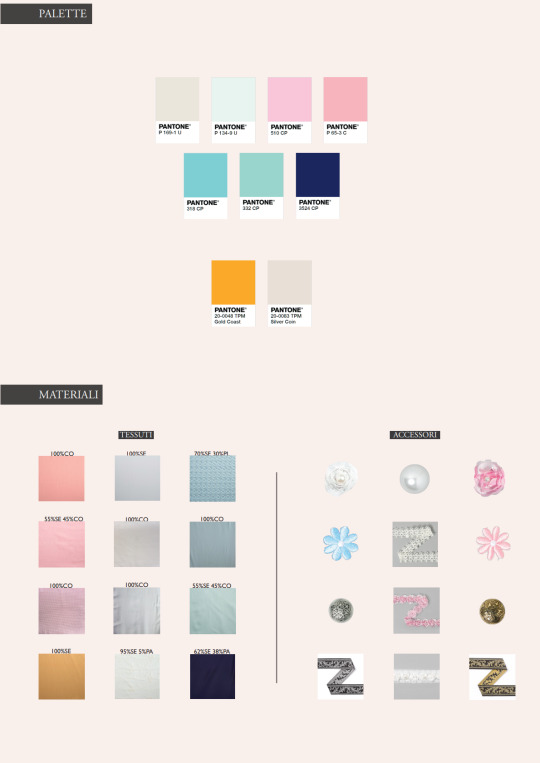
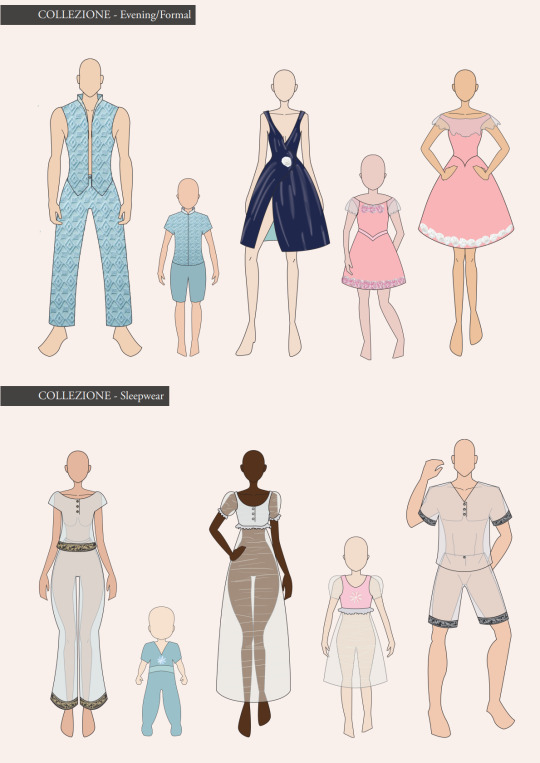




2nd Year Academy Group Project - Collection for Atelier Via Maggio
“Naturenaissance” SS2018
#ᴘᴏʀᴛғᴏʟɪᴏ#mattie#mattie fashion#fashion academy#fashion design academy#fashion academy project#italian fashion academy#naturenaissance#natural fabrics#renaissance#fashion design#fashion#fashion student#fashion collection#atelier collection#indie designer#italian tailor#italian fashion designer#italian designer#outfit#beachwear#evening collection#sleepwear#ss18#ss2018#purplematthiola#spring summer collection
4 notes
·
View notes
Text

Sophia Loren in the Christian Dior salon at the Lancaster hotel in Paris. In the dress she will wear at the 35th Academy Awards on April 8, 1963 in Santa Monica. Photo Burt Glinn.
Sophia Loren dans le salon Christian Dior de l'hôtel Lancaster à Paris. Dans la robe qu'elle portera lors de la 35e cérémonie des Oscars le 08 avril 1963 à Santa Monica. Photo Burt Glinn.
#sophia loren#italian actress#italian icon#fashion icon#christian dior#marc bohan#35th academy awards#april 1963#fashion 60s#1963#spring/summer#printemps/été#collection haute couture#burt glinn#paris#santa monica#hôtel lancaster
54 notes
·
View notes
Note
omg this sneak peek made me completely obsessed with this au, i need to know what happens next
how do we go from here, to when everyone is in different time periods, Lucy has lost her memory and Sophie is looking for Ben while he’s depressed in the countryside???
i love this so so much, i’m so invested 🤩
(also, i’m italian and it was so funny and literally unexpected to read cazzo cazzo ahahaha)
can’t wait to read more about this au, you’re so talented 🫶🏼
Ps. i’m a fashion student and i loved your met gala opinions☺️
What happens next is that the time warp trio manage to travel back in time to about three months before the absolute bedlam they first stumbled into occurs. They're back in the alleyway but fortunately London is still in one piece and yet to be invaded. They follow Sophie's instruction to find the Minimax Fire Extinguisher Company, though it takes them a couple of days just to locate the building and when they do they're not quite sure why Sophie told them to go there. After a few hours of skulking around, wondering what a fire extinguisher company has to do with anything, a gentleman exits the building and does a double take of the three men. He beckons them to follow him at a distance and though apprehensive they go along with him and end up at his flat where upon the stranger's features shift and the woman now in front of them tightly embraces Gareth.
Sophie is relieved that they're finally there and Gareth quickly informs her of the scene they came across when they first landed from their time travel, a scene that will take place in three months time. She is left stunned by the insight as she tries to wrap her head around it and asks several questions though the trio don't have much information to provide her with other than the fact that England is three months away from having an atomic bomb dropped on them. Sophie's frustrated that her future self didn't give them much else to work from but Colin points out that there was only seconds to go before they were nuked.
Gareth then questions why Sophie's working for a fire extinguisher company and she reveals that the building she had come out from is actually the main operating base of the Secret Intelligence Service. She explains that ever since she landed in the past four years previously that she's been working tirelessly to track down everyone, and by going undercover within the SIS she hoped they'd be the first place to receive reports of anyone with superhuman abilities. Her logic paid off and as a result she knows that the majority of the Umbrellas and Bridgertons are currently present in the time period they now find themselves in (and shows them a board she has made up detailing everyone's movements and sightings etc), however there are still a few unaccounted for. There's nothing about Penelope since following the events that led up to the time travel she decided to stop using her powers altogether; no sign of Lucy due to Gregory taking her powers as well as her amnesia; and much to Sophie's perpetual dismay (as well as her unstable appearance) there's no trace of Benedict whatsoever. Gareth tells her that seeing as all three were present three months from now that they're either going to land soon enough or else they're already present in 1940s London, which at the very least cheers her up momentarily before remembering the severity of the stakes they're up against.
Colin questions how events could have changed so drastically for the world war to have turned into the rest of the world being against Britain. Sophie pours herself a drink before launching into an explanation. Several major events in WW2 never took place due to interference from the Umbrellas and Bridgertons; though the main one is that Hitler has been dead for two years. Anthony, Simon, Kate, and Hyacinth worked together to assassinate the biggest player of the war and whilst it was a positive outcome, their blatant show of their superpowers coupled with the bravado they flaunted on a world's stage has led to fear among other countries. Great Britain is armed with what appears to be the most powerful weapons; human beings with special powers who would appear to be able to cause plenty of damage if they so choose to, and it's struck international fear as a result. At the moment things are tense between governments and the world is on edge for what is to come and while Sophie wasn't sure what they were bracing themselves for, it would appear that in three months time the rest of the world is planning to invade the country they see as a threat and in case of defeat, the atomic bomb will suffice as backup.
Now armed with what the future holds if they don't do something about it, Sophie and the time warp trio decide to round up the Umbrellas and Bridgertons in order to return to their original timeline and prevent the country from being nuked; however there's going to be several speed bumps along the way as they try to track down and regroup the two sets of siblings.
#asks#leaving it there for the time being but i'll expand on more later#fun fact i googled italian curse words just for the drabble lmao#and i'm glad you enjoyed my silly met gala opinions regardless of my lack of fashion know how#the umbrella academy au
4 notes
·
View notes
Text
At it again, from another angle this time.
‘Old’ weapons. Or at least redundant, as a species traverses into space the new technology makes an old gun or even older sword/arrow/spear and so on useless and nearly powerless. The new weapons are ‘ray this’ and ‘beam that’ ‘plasma so and so’ .
Ofcourse this makes sense, the energy based weapons are far less wasteful and lighter, easier to carry and easier to handle. No need to sharpen weapons with a plasma blade and even then, why use close quarters weapons if you have access to stun, kill or poison rays and many more.
On top of that many civilisations prefer to forget their less then stellar past and make analog weapons obsolete. When the humans joined the council many expected them to do the same. They didn’t, production stopped yes, but interested people could still partake in lessons and the old fashioned ways were shown off in museums. Training to be part of a spaceship crew still included lessons in their old weapons as an opportunity to be prepared for going to “newer” worlds.
So with that in mind i have a few little vignettes ideas and for ease’ sake its gonna be on the same ship, the Serpentine.
Important crew:
Primoz, captain -Limoyh a four armed species-
Krag, second in command (brother of Primoz)
Kit, dokter -avian, bird like, she has feathers like a swallow-
Ortez, ASR (all species resources, human resources in space) -kiltak, insectoid species, think ants but exoskeleton-
Lugea, helmsperson (does the steering) -rock like alien-
Artex, engineer/mechanic 1 -also Kiltak-
And then our humans:
Kamari, navigator -Eritrean woman- (has cat named Sidra)
Markus, weapons expert (knows how to use them and upkeep, also shields) -Swedish man-
Petrus, mechanic/engineer 2 -Italian man-
Lilly, administrator/note keeper (learns languages for fun)-english woman-
Yes i know all of this could have also been accomplished by saying they are all from America… nope this is more fun. This is under the assumption that to get into the joint academy for space faring you need to be able to speak and write English.
Obviously there are more people on the ship but these are most important
~~~~~~~~
1. Sparring
Ortez was having a good day, the serpentine had left port and was making good progress toward their next destination on w-kl-18, referred to as deltax by it’s residents, for a routine drop off.
In port on Unity (the planet where the council resides and the universal court is) they picked up the final crew members among who a ‘team’ of humans. Pre bonded humans were supposed to be less chaos inducing and easier bonded with the rest of the crew. Ortez was rather happy the captain listened to him on this matter.
The humans had been more diverse than he expected and were currently what they called ‘settling in’. He was on his way to the rooms they had.
‘Stop it please we’ve been here less than 4 hours!’ The soft voice he recognises as Lilly’s is barely audible over the loud clanging sounds. Rounding the corner Ortez sees a terrifying scene. The two human males locked together with two sticks made of metal baring teeth at each other, with a push the olive skinned man, he remembers is called Petrus, breaks the hold and goes in low swiping at the tall mans legs making Markus fall over.
Ortez is about to intervene when without a sound the dark skinned leader of the group seemingly appears without a sound behind him and runs into the fray with a similar stick.
Whacking Petrus stick away from Markus’ throat she steps inbetween “stop it. You’re scaring our ASR. We want to make a good impression remember.” The men look right at him and both put down the sticks, Markus puts his hand up in a ‘wave’ “sorry about that, Ortez it was right? We were just sparring.’ Moving further into the room he uncurls his front two claws tapping at the metal poles “sparring with this? We usually only do body to body training, this seems rather old.” Petrus speaks up to that “ah yes those are old earth weapons, we like keeping up a bit of skill with several kinds as a side activity. Don’t worry tho, we train with blunt weapons.”
Not entirely appeased the insectoid looks to the imposing woman, who seems entirely at ease even though two people had been fighting. When she caught his eyes, she smiled that terrible toothy grin “truly don’t worry, like Petrus said they are blunt and it is a way for us to let of some steam and keep in shape. But next time we’ll do it in the training rooms… right boys?” Pinning the two men with withering stares they nodded quickly.
Ortez did not know humans released steam, but he felt right now was not the moment to go into that. Saying his goodbye he skittered to inform the captain.
This was bound to be interesting.
~~~~~~~~~~~
2. “The Roman empire”
“So you are telling me that at any given moment you could be thinking about a several thousand years old society that no longer exists and it would surprise nobody?” Artex was perplexed, when he and Petrus were working on the reactor core Lilly had wandered through and mentioned this old civilisation sparking heated debate. She thought the greeks were far more interesting but Petrus had been unmoved by her arguments. The other man speaks while pushing some buttons “well yea, the empire made great strides and amazing structures, Lilly just prefers the mythos of the greek while i enjoy the focus on millitary prowess.” Shrugging he looks up “don’t you guys have something like that?” Artex stretches his legs, all 6 of them in a wave like motion “not really, when change happened the history books were changed to make it seem like it was always that way” the human makes eye contact “wait so how do you know how to play -old civilisation- as a kid? We play fought with wooden sticks, wooden swords and branches we cut to look like guns…” that horrofied the insectoid, raised with violence like it was a normal thing.
Almost like they never left their dark ages
~~~~~~~~~~~~
3. Whats in a name (bit off topic but the idea just kinda happened)
Te very first time the humans were introduced to their new crew there was a bit of a hiccup. When Kamari introduced herself they looked up a bit confused but went further down the row. After Lilly they came back around and referred to Kamari as moon. Now Kamari recognised the strange look, they had translators that only had basic human translation, which means that her name “Kamari” which comes from Arabic and is a word for moon/soft glow of the moon, is translated fully but not as name so when they speak to her it translates out of their language to English which would be moon. This is luckily easily fixed with an update, but it was something that stil spoke of how new the human race was to the cosmos.
Her cat Sidra made them laugh as that means Star so she was the moon with her star.
(Random thought about how multiple human languages could screw with translations)
~~~~~~~~~~~~
Soooooo kinda had a 4th story that is pretty sad but also bad ass, but this is getting too long already
Imma write that in a new post over the coming days
Hopefully people like this, if you have prompts you’d like to see with this crew feel free to ask.
#humans are space orcs#humans in space#humans are space oddities#humans are weird#humans are space australians#humans are insane#humans are deathworlders#humans are space fae#humans are space capybaras
284 notes
·
View notes
Text
OFMD Stede Bonnet as a Macaroni: Wealth, Gender and Sexuality in the 18th Century Fashion World
Historical Inaccuracy in Our Flag Means Death? Never!
Historical inaccuracy! I hear you cry. A Macaroni in 1717!?! It is true macaroni fashion was really a late-18th century fashion trend, seemingly reaching its peak in the 1770s. However Our Flag Means Death is nothing if not historically inaccurate. Stede’s costumes seem to take inspiration from across the 18th century rather than worrying about what would have actually been worn in 1717.
Early 18th century suits tended to have round necklines, loose-fitting sleeves with wide cuffs, long waistcoats that stoped just above the knee, and coats with full skirts just a little longer that the waistcoat.

[Left: Matthew Prior, oil on canvas, c. 1713-1714, by Alexis-Simon Belle, photo credit: St John's College, University of Cambridge, via Art UK.
Middle: Matthew Hutton of Newnham, Hertfordshire, oil on canvas, c. 1715, by Johannes Verelst, photo credit: National Trust Images, via Art UK.
Right: William Leathes, Ambassador Brussels, oil on canvas, c. 1710-1711, by Herman van der Myn, photo credit: Colchester and Ipswich Museums Service: Ipswich Borough Council Collection, via Art UK.]
As the century continued we get standing collars and turned down collars but round necklines were still around as well, sleeves got tighter with smaller cuffs, the waistcoats got shorter and the coats lost their skirts.
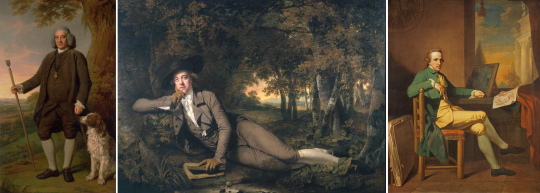
[Left: Thomas ‘Sense’ Browne, oil on canvas, c. 1775, by Nathaniel Dance-Holland, photo credit: Yale Center for British Art, via Art UK.
Middle: Sir Brooke Boothby, oil on canvas, c. 1781, by Joseph Wright of Derby, photo credit: Tate, via Art UK.
Right: David Allan, oil on canvas, c. 1770, by David Allan, photo credit: Royal Scottish Academy/National Galleries of Scotland (Antonia Reeve), via Art UK.]
Stede’s collars are inconstant some are rounded but others are turned down and Ed’s purple suit has a standing collar. Many of Stede’s coats have wide cuffs, but most have little skirt to them. His teal suit from the pilot has a bit of a skirt but its paired with a short waistcoat.

Most of Stede’s waistcoats are short with the exception of his suits from both the wedding portrait with Mary and the the family portrait. Both suits are very straight giving him a boxy appearance and are pretty different from most of the suits we see him in.

All in all I don’t think they were aiming for historically realistic clothes but with the collars, short waistcoats, and lack of skirts I get more of a late-18th century vibe.
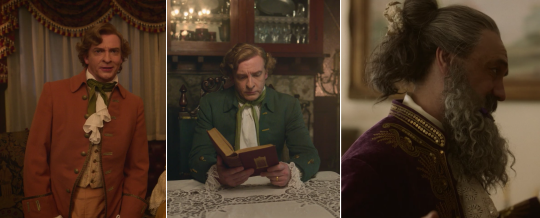
So what was a Macaroni?
A Classical Dictionary of the Vulgar Tongue (1785), defined macaroni as follows:
An Italian paste made of flour and eggs; also a fop, which name arose from a club, called the maccaroni club, instituted by some of the most; dressy travelled gentlemen about town, who led the fashions, whence a man foppishly dressed, was supposed a member of that club, and by contraction stiled a maccaroni.
The macaroni club was said to have comprised of young men who had gained a taste for French and Italian textiles on their Grand Tour (a traditional trip taken tough Europe by upper class men when they came of age). The earliest reference to the club is from a letter from Horace Walpole to Lord Hertford on the 6th Feb 1764:
at the Maccaroni Club (which is composed of all the travelled young men who wear long curls and spying-glasses),
In his book Pretty Gentleman: Macaroni Men and the Eighteenth-Century Fashion World Peter McNeil suggest the club was actually Almack’s. Almack’s was a private club at 50 Pall Mall that was attended by prominent Whigs including Sheridan, Fox and the Price of Wales. (p52) While the name may have originated from the men at Almack’s it was soon used to describe any man who followed the associated fashion trends.
So what were these trends?
Hair
“Still lower let us fall for once, and pop
Our heads into a modern Barber’s shop;
What the result? or what we behold there?
A set of Macaronies weaving hair.”
~ The Macaroni by Robert Hitchcock
Probably the most iconic aspect of macaroni fashion was the hair. “It was the macaroni attention to wigs that caused most consternation” explains Peter McNeil. The macaroni hair “matched the towering heights of the female coiffure, with a tall toupee cresting at the centre front. The wig generally had a long tail at the neck (’queue’), which when folded double was called the ‘cadogan’, all of which required regular dressing with pomade and powder, sometimes in the colours of pink, green or red.” (p45)
The height of the macaroni hair was a point of particular fascination in macaroni caricature exaggerating it beyond what the macaroni were probably actually wearing. Compare below Tom’s hair in the satirical print What is this my son Tom to the self portrait of Richard Cosway, who was satirised by Mary Darly as “The Miniature Macaroni” (a reference both to his height and his career as a miniature painter).
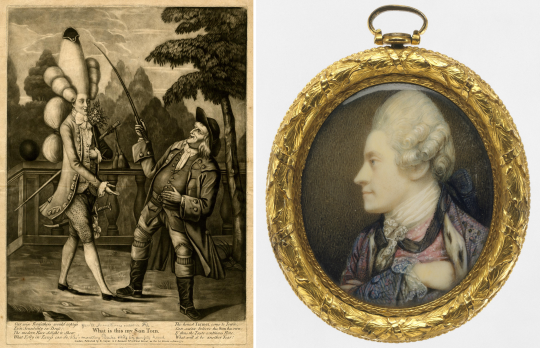
[Left: What is this my son Tom, print, c. 1774, published by Sayer & Bennett, via The British Museum.
Right: Self-Portrait, Ivory, c. 1770–75, by Richard Cosway, via The Met.]
The way Stede usually wears is hair is not particularly macaroni nor particularly 18th century for that matter. The exception to this is his wig from The Best Revenge Is Dressing Well though even this doesn’t have the iconic macaroni hight.

Interestingly both Stede and Ed are wearing flowers in their hair. While there are certainly depictions of women with flowers in there hair I’m not aware of this being a trend in mens fashion at all. However macaroni were known for wearing large nosegays.
While the tall hair was certainly iconic not all macaroni wore their hair tall. Joseph Banks, who was satirised as “The Fly Catching Macaroni” by Matthew Darly, is depicted in his portrait with a fairly typical 18th century hairstyle. Its not the hair alone that makes a macaroni, it was just one aspect of the fashion.
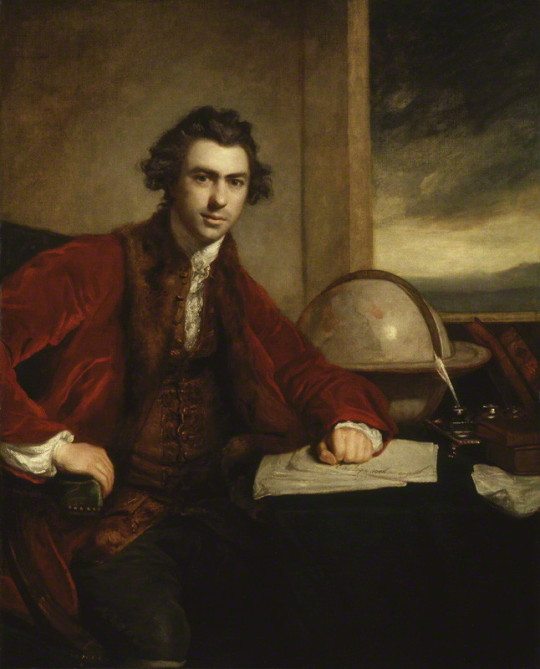
[Sir Joseph Banks, oil on canvas, c. 1771-1773, by Sir Joshua Reynolds, via Wikimedia.]
Suit
“If I went to Almack’s and decked out my wrinkles in pink and green like Lord Harrington, I might still be in vogue.” ~ Horace Walpole to Lord Hertford, 25 Nov 1764
Menswear of the period consisted of the same basic elements; shirt, stockings, breeches, waistcoat and coat. What differentiated the macaroni from others was the fabric, cut, colour and trimmings of the suit. “At a time when English dress generally consisted of more sober cuts and the use of monochrome broadcloth,” explains Peter McNeil “macaronism emphasised the effects associated with French, Spanish and Italian textiles and trimmings”. Popular amongst macaroni were brocaded and embroidered silks and velvets, sometimes further embellished with metallic sequins, simulated gemstones and raised metallic threads. Popular colours included pastels, pea-green, pink, red and deep orange. (McNeil, p30-32)
Far from wearing “monochrome broadcloth” Stede likes a “fine fabric” and dresses in a range of colours, we see him in teal, pink, purple, green, white, red, peach &c.
Tightly cut French style suits known as habit à la française were popular with macaroni. (McNeil, p14) Stede’s suits vary somewhat in cut but some are very French. The peach suit Stede wears in We Gull Way Back particularly has a very macaroni feel to me. Compare it to the English suit (left) and the French suit (right).

From the back you can see the English suit has more of a skirt to it.

Both Stede’s suit and the French suit are somewhat plain but have been paired with a floral embroidered waistcoat, while the English suit has a matching plain black waistcoat.
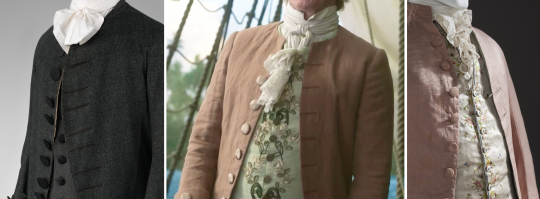
[Left: English suit, wool, silk, c. 1755–65, via The Met, number: 2009.300.916a, b.
Right: French suit, Silk plain weave (faille), c. 1785, via LACMA, number: M.2007.211.47a-b.]
Fabric covered button’s were common in the 18th century, you can see them on both the French and English coats above. In contrast Stede wears a lot of metal buttons. Steel buttons were popular amongst macaroni, a trend that was satirised in Steel Buttons/Coup de Bouton.

[Steel Buttons/Coup de Bouton, print, c. 1777, by William Humphrey, via The British Museum.]
Pumps and Parasols
“Maccaronies who trip in pumps and with Parasols over their heads” ~ Mrs Montagu
High heels had been popular amongst men during the 17th century. The Royal Collection Trust explains:
In the first half of the 17th century, high heeled shoes for men took the form of heeled riding or Cavalier boots as worn by Charles I. As the wearing of heels filtered into the lower ranks of society, the aristocracy responded by dramatically increasing the height of their shoes. High heels were impractical for undertaking manual labour or walking long distances, and therefore announced the privileged status of the wearer.
(Royal Collection Trust, High Heels Fit for a King)
In 17th century France Louis XIV popularised red-heels by turning them into a symbol of political privilege, which in turn spread the fashion to England. But with the sobering of menswear in England around the turn of the century the high heel and the red-heels went out of fashion. (see Bata Shoe Museum Toronto, Standing TALL: The Curious History of Men in Heels)
The high heel had a bit of a resurgence in the 1770s with macaroni fashion. The Natural History of a Macaroni snipes that the macaroni’s “natural hight is somewhat inferior to he ordinary size of men, through by the artificial hight of their heels, they in general reach that standard”. (Walker’s Hibernian Magazine, July 1777, p458)
Red-heels were reintroduced to England by young men returning from their Grand Tours. A young Charles James Fox (satirised by Mathew Darly as “the Original Macaroni”) wore such French style red-heeled shoes. The Monthly Magazine recalls a young Fox as a “celebrated “beau garçon” with “his chapeau bras, his red-heeled shoes, and his blue hair-powder.” (Oct 1806) and The Life of the Right Honorable, Charles James Fox recalls him in his “suit of Paris-cut velvet, most fancifully embroidered, and bedecked with a large bouquet; a head-dress cemented into every variety of shape; a little silk hat, curiously ornamented; and a pair of French shoes, with red-heels;” (p18) And in Recollections of the Life of the Late Right Honorable Charles James Fox B.C. Walpole recalls him as “one of the greatest beaus in England,” who “indulged in all the fashionable elegance of attire, and vied, in point of red heels and Paris-cut velvet with the most dashing young men of the age. Indeed there are many still living who recollect Beau Fox strutting up and down St. Jame’s-street, in a suit of French embroidery, a little silk hat, red-heeled shoes, and a bouquet nearly large enough for a may-pole.” (p24)
Compare the French style red-heeled shoes of Louis XIV to Stede’s red-heeled shoes.

[Left: detail of Louis XIV, oil on canvas, c. 1701, by Hyacinthe Rigaud, via Wikimedia.]
However most macaroni were depicted wearing the more standard late 18th century low-heeled bucked shoes. Where they distinguished themselves was the size and decoration of the buckles. “Such buckles could be set with pate (lead glass) or ‘Bristol stones’ (chips of quartz), or diamonds if you were very rich.” Explains peter McNeil, “The new macaroni fashion was for huge silver or plated Artois shoe buckles which the Mourning Post claimed weighed three to eleven ounces.” (p90)
While certainly not as iconic has his heels Stede also wears these sorts of shoes. Compare below the shoes from a macaroni caricature to Ed wearing Stede’s shoes (I couldn’t get a good shot of Stede wearing them).

[Left: detail of How d'ye like me, print, c. 1772, published by: Carington Bowles, via The British Museum.]
“A great many jewelled accessories accompanied the macaroni look”, writes Peter McNeil, “They included hanger swords, very long canes, clubs, spying glasses and snuff-boxes.” (p68) Tragically we don’t see Stede with a fashionable dress sword or a cane but we do see him with another accessory popular amongst macaroni; a parasol.
Popular in France parasols/umbrellas were adopted by the macaroni. They were popular amongst both men and woman in France but in England they had a feminine connotation. (McNeil, p129) In the 1780s as umbrellas became more popular amongst men there was a cultural pushback to the perceived gender transgression. On the 16th of August 1780 the Morning Post complains of of the “canopy of umbrellas” bemoaning that “the effeminacy of the men, inclines them to adopt this necessary appendage of female convenience”. On the the 4th Oct, 1784, the Morning Chronicle published a letter complaining of “that vile foppish practice of sheltering under a umbrella”. The author of this tirade writes that while “the ladies should be allowed to secure their beauty and persons from the heat of the sun, or the inclemency of the weather,” because “it is natural, and has a striking effect”, that “to see a great lubberly cit, bounce from his shop, with a coat, hat, and wig that are not together worth one groat,” sheltering “from the influence of the solar beam” was “intolerable.” However:
The macaroni being of the doubtful gender, may in part claim a feminine right; his dress is too delicate to bear an heavy shower, perhaps his person is so too; but a coach, if a clean one is to be found would serve his purpose much better, as there would be less likelihood of his being washed away into the kennel, which he deserves to be kicked into for his d-----d affectation.

Wealth
Born from rich young men returning from their tours with a taste for French and Italian textiles macaroni fashion was expensive. Certainly a working class man would not be able to afford Stede’s wardrobe. Both the sheer amount of clothes he has as well has the fabrics those clothes are made of are indications of wealth. However to say that Stede’s wardrobe is only an indication of wealth would be missing part of picture.
Most rich upper class English men (including colonial) wore plain monochrome suits. Even amongst the gentry macaroni fashion was not the norm. Compare bellow George Washington (left) who was a wealthy planation owner, but notably not a macaroni, to Richard Cosway (right) who was a famous macaroni.

[Left: George Washington, oil on canvas, c. 1796, by Gilbert Stuart, via Pennsylvania Academy of the Fine Arts.
Right: Detail of The Academicians of the Royal Academy, oil on canvas, c. 1771-72, by Johan Zoffany, via The Royal Collection Trust.]
In spite of the expense macaroni fashion was not exclusive to the upper classes. “Macaroni dress was not restricted to members of the aristocracy and gentry,” writes McNeil, “but included men of the artisan, artist, and upper servant classes, who wore versions of this visually lavish clothing with a distinctive cut and shorter jackets. Wealthier shopkeepers and entrepreneurs also sometimes wore such lavish clothing, particularly those associated with the luxury trades, such as mercers and upholsterers -” (p14)
It was possible to copy certain aspects of macaroni fashion on a cheeper budget. The hairstyle in particular was achievable without braking the bank. And there were ways to replicate the effects of certain expensive fashion trends for cheeper prices. For example patterns could be printed rather than embroidered.

[Left: printed waistcoat, cotton, c. 1770–90, via The Met, number: 35.142.
Right: embroidered waistcoat, silk, c. 1780–89, via The Met, number: 2009.300.2908.]
The Town and Country Magazine complains “we now have Macaronies of every denomination, from the colonel of the Train’s-Bands down to the errand-boy.” (McNeil, p169) The Morining Post mocks macaronies that couldn't financially keep up with the trends:
The macaronies of a certain class are under peculiar circumstances of distress, occasioned by the fashion, now so prevalent, of wearing enormous shoe-buckles; and we are well assured that the manufactory of plated ware was never known to be in so flourishing a situation.
(14 Jan, 1777)
In 18th century England, class was about more than just how much money you had. It was about pedigree. “English society was particularly alert to those whom it felt were using clothes to achieve a social status they did not merit” explains McNeil. Richard Cosway was a famous macaroni from modest background. Born to a Devonshire headmaster he was sent to London to study painting at 12. He became a very successful miniature painter and grew rich from the patronage of the Prince of Wales (later George IV) and Whig circles. In Nollekens and his Times J.T. Smith writes of Cosway:
He rose from one of the dirtiest boys, to one of the smartest of men. Indeed so ridiculously foppish did he become that Mat Darly, the famous caricature print-seller, introduced an etching of him in his window in the Strand, as ‘The Macaroni Miniature Painter’
(McNeil, p105-14)
But it was not only the Darlys that satirised Cosway Hannah Humphrey mocks Cosway as a social climber in A Smuggling Machine or a Convenient Cos(au)way for a Man in Miniature which depicts him standing under the petticoats of his much taller wife Maria. In the background there is a picture of Cosway climbing a ladder that rests upon a woman (she is believed to either be Angelica Kauffman or the Duchess of Devonshire). Below this reads:
Lowliness is Young Ambitions Ladder,
Whereto the climber upward turns his Face
But when he once attains the upmost round
He then unto the Ladder turns his back,
Looks unto the clouds - scornin [sic] the base degrees
By which he did assend.
Shak. Jul. Caesar.

[A Smuggling Machine or a Convenient Cos(au)way for a Man in Miniature, print, c. 1782, by Hannah Humphrey, via The British Museum.]
Another famous macaroni not born into the aristocracy was Julius Soubise. Brought to England from the West Indies as a slave he was taken in by Catherine Hyde, the Duchess of Queensbury. She gave him a leisured childhood, in which he was taught to play and compose for the violin, was taught to fence by Domenico Angelo, and learned oration from David Garrick. “Macaroni caricatures of Soubise parodied a foppish upstart whose outfits and entertainments, financed by the Duchess, affronted both racial and social expectations of an African male.” Writes Petter McNeil, Soubise was satirised as “a Mungo Macaroni” an “offensive term meaning a rude or forward black man.” (p118)
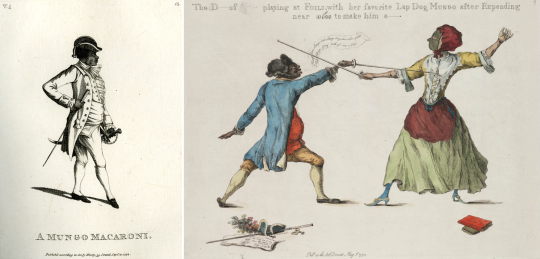
[Left: A Mungo Macaroni, print, c. 1772, by Matthew Darly, via The British Museum.
Right: The D------ of [...]-- playing at foils with her favorite lap dog Mungo after expending near £10000 to make him a----------*, print, c. 1773, by William Austin, via Yale Center for British Art.]
The expense of Stede’s wardrobe is a key part of the narrative. Stede has nice fancy luxurious things. Ed wants nice fancy luxurious things. Ed was born a poor brown boy and while he may be rich now he can never truly change his class. He could be as rich as Richard Cosway or Julius Soubise but to the gentry he will always be that poor brown boy.

Gender
As we have already seen in the tirade against men using umbrellas the macaroni was perceived as being of “the doubtful gender”. (The Morning Chronicle, 4 Oct, 1784)
The Natural History of a Macaroni writes that there “has within these few years past arrived from France and Italy a very strange animal, of the doubtful gender, in shape somewhat between a man and monkey,” that dresses “neither in the habit of a man or woman, but peculiar to itself”. The author states that “they are in no respect useful in this country”:
that the minister of the war department would give orders to have them enlisted for the service of America: we do not mean to put them on actual duty there. Alas! they are as harmless in the field, as they are in the chamber, but they may stand as faggots to cover the loss of real men.
(Walker’s Hibernian Magazine, July 1777, p458-9)
A “faggot” being “A man who is temporarily hired as a dummy soldier to make up the required number at a muster of troops, or on the roll of a company or regiment.” (see OED)

[The Masculine Gender & The Feminine Gender, etching with touches of watercolour, c. 1787, Attributed to Henry Kingsbury, via The Met.]
The macaroni wasn’t just considered effeminate because of the way they dressed but also because of their interests and the way walked and talked. Famous for playing fops and macaroni, the actor David Garrick did a lot to establish the character of the macaroni in the public mind. In his poem The Fribbleriad Garrick mocks the men who were offended by his performances asserting, perhaps accurately, that they were offended because it was them he mocked. He portrays a group of angry effeminate men meeting in order to seek revenge on him for his portrayal of them:
May we no more such misery know!
Since Garrick made OUR SEX a shew;
And gave us up to such rude laughter,
That few, ’twas said, could hold their water:
For He, that player, so mock’d our motions,
Our dress, amusements, fancies, notions,
So lisp’d our words, and minc’d our steps,
The macaroni had become more than simply an effeminate man, he had become a new sex. Something not quite man or woman. Something in-between. A new description of a macaroni asks the question:
Is it a man? ‘Tis hard to say - A woman then
- A moment pray -
So doubtful is the thing, that no man
Can say if ‘tis a man or woman:
Unknown as yet by sex or feature,
It moves - a mere amphibious creature.
(McNeil p169)
Sexuality
Much like today in the 18th century effeminacy was associated with homosexuality. Men who had sex with other men were known as mollies. A Classical Dictionary of the Vulgar Tongue (1785), defined a molly as “A Miss Molly; an effeminate fellow, a sodomite”. In the History of the London Clubs (1709), Ned Ward characterises mollies as follows:
There are a particular Gang of Wretches in Town, who call themselves Mollies, & are so far degenerated from all Masculine Deportment or Manly exercises that they rather fancy themselves Women, imitating all the little Vanities that Custom has reconcil’d to the Female sex, affecting to speak, walk, tattle, curtsy, cry, scold, & mimick all manner of Effeminacy.
“By the 1760′s,” explains Peter McNeil, “too much attention to fashion on the part of a man was read as evidence if a lack of interest in women”. (p152)
Macaroni were often portrayed as incapable or simply uninterested in sexual relations with women. This attitude is expressed by Mr. Bate in the following dialogue from The Vauxhall Affray; Or, the Macaronies Defeated:
Mr. Fitz-Gerall: I always though a fine woman was only made to be looked at.
Mr. Bate: Just sentiments of a macaroni. You judge of the fair sex as you do your own doubtful gender, which aims only to be looked at and admired.
Mr. Fitz-Gerall: I have as great a love for a fine woman as any man.
Mr. Bate: Psha! Lepus tute es et pulpamentum quæris?
Mr. Fitz-Gerall: What do you say, Parson?
Mr. Bate: I cry you mercy, Sir, I am talking Heathen Greek to you; in plain English I say, A macaroni you, and love a woman?
Mr. Fitz-Gerall: I love the ladies, for the ladies love me.
Mr Bate: Yes, as their panteen, their play-thing, their harmless bauble, to treat as you do them, merely to look at
While lack on interest in woman does not necessarily mean attraction to men, Matthew Darly takes the implication there in his 1771 set of macaroni caricatures which induces a print entitled Ganymede, a reference to Zeus’ male lover of the same name. Ganymede is believed to be a parody of Samuel Drybutter who had been arrested for attempted sodomy in January 1770. Darly also includes the character Ganymede in Ganymede & Jack-Catch. Jack-Catch is a reference to the infamous English executioner John Ketch. In the print Jack-Catch says, “Dammee Sammy you’r a sweat pretty creature & I long to have you at the end of my String.” Ganymede replies, “You don’t love me Jacky”. Jack-Catch is holding a noose with one hand and stroking Ganymede’s chin with the other. Jack-Catch is soberly dressed in typical 18th century menswear, while Ganymede’s dress is distinguished by his lace ruffles and styled wig. The print is not only suggesting that macaroni are sodomites but making a joke of the execution of them. The punishment for a sodomy at this time in England being death by hanging.

[Left: Ganymede, print, c. 1771, Matthew Darly, via The Met.
Right: Ganymede & Jack Catch, print, c. 1771, Matthew Darly, via The British Museum]
An anonymous letter to the Public Ledger (5 Aug, 1772) says blatantly what others had already implied. “The country is over-run with Catamites, with monsters of Captain Jones’s taste, or, to speak in a language witch all may understand, with MACCARONIES”. The writer warns macaroni who have “escaped detection” as sodomites and “therefore cannot fairly be charged” that they have not avoided suspicion:
Suspicion is got abroad-the carriage-the deportment-the dress-the effeminate squeak of the voice-the familiar loll upon each others shoulders-the gripe of the hand-the grinning in each others faces, to shew the whiteness of the teeth-in short, the manner altogether, and the figure so different from that of Manhood, these things conspire to create suspicion; Suspicion gives birth to watchful observation; and, from a strict observance of the Maccaroni Tribe, we very naturally conclude that to them we are indebted for the frequency of a crime which Modesty forbids me to name. Take warning, therefore, ye smirking group of Tiddy-dols: However secret you may be in your amours, yet in the end you cannot escape detection;
Bows on His Shoes
18th century shoes were typically buckled, laces and ribbons were simply unfashionable. As mentioned previously macaroni were distinguished by the size and decoration of the buckles. So are Stede’s bows simply ahistorical? Well there are references to 18th century men wearing laces and ribbons.
Towards the end of the 18th century laces started to come into fashion. Appeal from the Buckle Trade of London and Westminster, to the Royal Conductors of Fashion (1792) complained that despite how “tender and effeminate the appearance of Shoe Strings” the “custom of wearing them has prevailed.”
Perhaps the most intriguing reference is that of Commissioner Pierre Louis Foucault’s papers where he details the surveillance, investigation and entrapment of "pederasts” in Paris. It is important to note that the word “pederasty” was used synonymously with “sodomy” in the 18th century and did not denote age simply sex. An Universal Etymological English Dictionary (1726) defines “A pederast” as “a Buggerer” and “Pederasty” as “Buggery”.
Foucault and the men working with him identified particular clothing worn by men seeking sex with other men that he called the “pederastical uniform”. In Foucault’s papers men are described as being “attired in such a way as to be recognized by everyone as a pederast”, “clothed with all the distinctive marks of pederasty”, or simply “dressed like a pederast”. This “uniform” generally included “some combination of frock coat, large tie, round hat, small chignon, and bows on the shoes.” Jeffrey Merrick in his article on Foucault speculates that these men dressed this way to signal to each other. However when questioned by police they would understandably deny such a purpose, one man when questioned about his outfit responded that everyone “dresses as he sees fit”. (Jeffrey Merrick, Commissioner Foucault, Inspector Noël, and the “Pederasts” of Paris,1780-3)
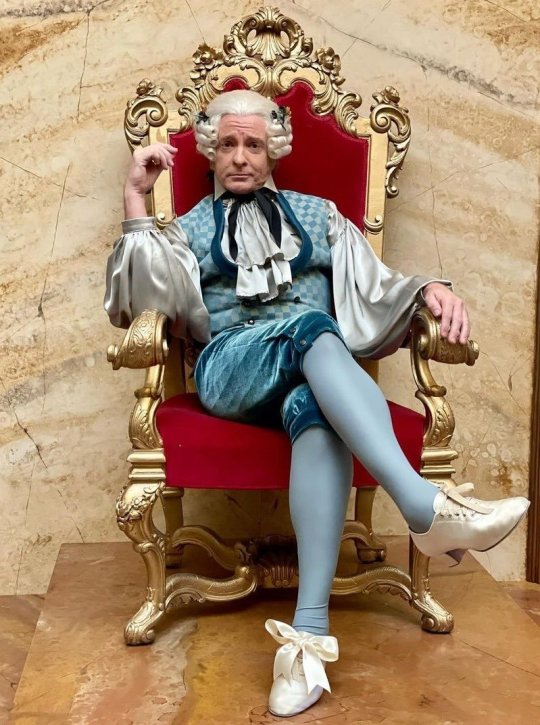
Conclusion
I’m not saying Stede is intended to be a macaroni. If that were the case they would have given him the iconic macaroni hairstyle. However the costuming team has clearly pulled from fashion trends that were associated with effeminacy and homosexuality. While OFMD is evidently wholly unconcerned with creating period accurate costumes the costumes are still clearly inspired by historical fashions. Perhaps the curtains really are just blue but maybe Stede wears bows on his shoes because he’s gay.
#I had way too much fun doing this#our flag means death#ofmd meta#stede bonnet#queer history#macaroni#historical fiction#fashion history
195 notes
·
View notes
Text

HUBERT ROBERT
The Farandole amidst Egyptian Monuments
Oil on canvas.
Hubert Robert's classical education at the prestigious Jesuit-run Collège de Navarre made him an able Latinist and inspired his youthful fascination with the ancient world. However, it was his journey to Rome in 1754 in the entourage of the newly-appointed French Ambassador to the Holy See -- the Comte de Stainville, later Duc de Choiseul -- that introduced him first-hand to those decaying monuments of the past that would become his lifelong artistic preoccupation and win him the sobriquet Robert des Ruines. He remained in Rome for eleven years, and through his unofficial attachment to the French Academy met important collectors and artists, including Fragonard; the great Italian engraver, Piranesi; and the painter of ruins, Panini, who profoundly influenced his work. He was introduced to the Abbé de Saint-Non, an antiquarian who in 1760 commissioned him and Fragonard to make drawn copies of the Greek, Roman and Egyptian antiquities that Saint-Non later reproduced in his deluxe guidebooks of Italian cities and their works of art.
Although Robert, like virtually all Europeans, had never been to Egypt, Rome had important Egyptian monuments that had been brought to the city, as well as Egyptianizing structures erected during the late years of Roman Empire, all easily available for his study. Several of Robert's Roman views dating from the late 1750s are enlivened with Egyptian motifs -- the Sphinxes, fragments of pharaonic sculpture, obelisks and pyramids that were fast becoming the standard repertoire of European 'Egyptomania'. The present painting is a variant on Robert’s composition of 1798, Girls Dancing around an Obelisk, now in the Montreal Museum of Fine Arts (fig. 1; inv. no. 1964.1464). In both works the artist juxtaposes the majesty of the ancient ruins with lively staffage. Dressed in the fashion of Robert’s day, the young dancers are caught in the music, oblivious to the passage of time. Beside them the broken obelisk and fountain basin tell a different story: great empires will fall, this earthly life is transient. It is this contrast that lends the philosophical depth to Robert’s work that Diderot described as the ‘poetic of ruins’.
#Hubert Robert#HUBERT ROBERT The Farandole amidst Egyptian Monuments#french artist#painter#painting#oil on canvas#art#artist#art work#art world#art news#ancient rome#roman history#roman art#egyptian art
34 notes
·
View notes
Note
what does it say about me if i dress exactly like the academy boys and enea.. im a lesbian fyi
but their styles are actually so interesting to me. spanish guys wearing hideous skinny jeans philipp plein alphatauri etc. italians with hoodies baggy shorts ugly beanies trying to be all streetwear (pecco i have not forgotten the supreme). and then there’s fabio
i LOVE fabio's terrible fashion he looks like if the da vinki twins were a quirky side character in a disney channel show from 2008...
#and hes SO nice and literally constantly shirtless. bestie.#callie speaks#motogp#asks#what says about you: you are a lesbian with incredible swag. objectively my favorite kind of person.
11 notes
·
View notes
Text
Ever since Winx Club came out, there's been quite a few suspiciously fairy-like magical girls in Italy alone. We all know Angel's Friends comic design was changed in the cartoon to compete with Winx, for example.


But what about lesser known italian fairies and copycats? Like the Nancy Fly book series, outright tracing art?

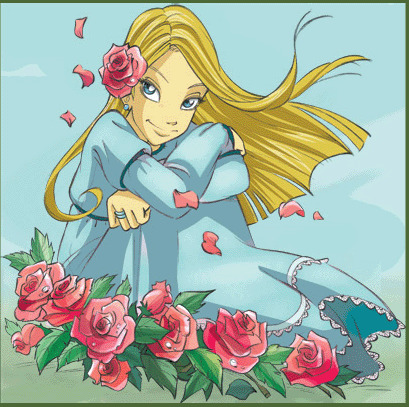
Or these My Little pony copycats with fairy wings, going to a magic academy as a group of 5. Yes these are italian


A shit ton of Tea Stilton (Geronimo Stilton for Girls) spin offs about an ensemble cast of fairies, with the earliest date I could fine being 2015 for the Ocean fairies one...




Milla and Sugar, a book series about a Fairy and a Witch that ran from 2005 to 2013


Fairy Oak, first coming out on 27th october 2005, from one of the W.i.t.c.h writers Elisabetta Gnone. Winx first aired in Italy from January 28th to March 3rd in 2004.


Even W.i.t.c.h. fell to this, making the New Power with bigger wings and longer hair, Enchantix style, coming out in July 2007. Note that Season 3 of Winx aired from January 29th to March 28th in 2007 and we know that W.i.t.c.h. and Rainbow share some staff around... right Artibani?

Special mention to Girls of Olympus, which came out in 2008. Not fairies but reincarnated goddesses, more akin to Sailor Moon's style in story, but the early 2000s fashion is very Winx adiacent

Fascinating phenomenon, the italian magical girl.
26 notes
·
View notes
Text
THIS DAY IN GAY HISTORY
based on: The White Crane Institute's 'Gay Wisdom', Gay Birthdays, Gay For Today, Famous GLBT, glbt-Gay Encylopedia, Today in Gay History, Wikipedia, and more … February 6



1453 – Girolamo Benivieni was a Florentine poet and a musician. His father was a notary in Florence.
He suffered from poor health most of his life, which prevented him from taking a more stable job. He was a leading member of the Medicean Academy, a society devoted to literary study. He was a friend of Giovanni Pico della Mirandola, whom he met for the first time in 1479; it was Mirandola who encouraged him to study Neoplatonism.
In the late 1480s, he and Mirandola became students of Dominican friar Girolamo Savonarola (1452–1498). In 1496, he translated the teachings of Savonarola from Italian to Latin. After he began following Savonarola, he rejected his earlier poetry and attempted to write more spiritually. He participated in Savonarola's Bonfire of the Vanities, and documented the destruction of art worth "several thousand ducats".
Pico della Mirandola experienced "an heavenly love" with Benivieni, ten years his junior, who ardently reciprocated his affections. Theirs was, they declared, a fervent but chaste love kept under watch by rigorous morality and Christian mysticism. However, during a sermon after Pico's death, Savonarola made a revelation which caused a sensation: Pico's soul had not immediately gone to paradise, but was consigned for a time to the flames of purgatory because of certain sins, which he did not wish to name. Popular opinion assumed that Pico had kept a female lover or a secret concubine.
Five centuries later, it is impossible to know the truth, but the probability that Pico had a male lover, perhaps Benivieni himself, is now less unbelievable, as documents emerge showing the significance of homosexuality in the circle of Pico's friends (such as Marcilio Ficino and Poliziano).
It will never be known whether or not Pico remained celibate, or if his love for Benivieni was consummated. What is known is a delicate testimonial to this love: the tomb in which they decided to be buried together, and which can still be seen in the church of San Marco in Florence.


1665 – The last of the Stuart monarchs, Anne Stuart (d.1714) was Queen of England from 1702 to 1714. Before that, Anne's older sister, Mary, had held the throne with her husband William of Orange. Historians of sexuality consider her long intimate friendship with Sarah Churchill, Duchess of Marlborough, central to the period's acceptance of romantic, and even erotic, relationships between upper-class women.
When she was six, her mother died of cancer, at which time she and her sister moved to Richmond palace, joining the household of Edward Villiers, his wife Lady Frances, and their seven children to be raised in proper Protestant fashion. It was here that Anne met Sarah Jennings (1660-1744), who would remain her closest friend, confidante, and advisor for the next twenty-five years. Anne did not particularly enjoy the company of the Villiers girls, a situation which may have contributed to her growing fondness for Sarah.
Anne's relationship with Sarah continued into adulthood, surviving many transitions, including Sarah's marriage to John Churchill, the criticism of her sister Mary, and Anne's own marriage and rise to the throne.
On July 28, 1683, Anne married George, Prince of Denmark, and assumed her new title of Princess of Denmark. Her marriage initiated a large number of unsuccessful pregnancies. She had countless miscarriages and gave birth to about twenty children. All but one, William, Duke of Gloucester, died shortly after birth. Tragically, William died at the age of eleven, depriving the Stuart line of an heir.
To the chagrin of the royal family and Queen Mary in particular, Anne's attachment to Sarah persisted and began to attract negative attention. Her critics considered it an "immoderate passion," inappropriate for a princess. Mary repeatedly called for Anne to dismiss Sarah from her company and forgo their friendship.
Despite such pressure, Anne remained loyal to Sarah. When Anne became queen after William's death, she promoted Sarah to the position of first lady of the bedchamber, which gave her unrestricted access to the queen. Anne also bestowed many gifts on Sarah and her husband, the first Duke of Marlborough, including the extravagantly expensive Blenheim Palace.
Sarah and Anne's intimacy began to wane after the first few years of Anne's rule. As Anne slowly began to pay more attention to her Tory advisors, Sarah felt her political opinions neglected.
To make matters worse, Anne grew fond of Abigail Hill Masham, a younger relative of Sarah's whom she had placed at court. As Abigail increasingly played the role of Anne's confidante, this was too much for Sarah to bear. She later became one of Anne's most bitter critics, attacking her for "having noe [sic] inclination for any but her own sex."
Anne struggled with many illnesses. At the end of July 1714, she suffered a fit and fell into a coma. She died on died on August 1, 1714.


1899 – Ramón Novarro (d.1968) was a Mexican leading man actor in Hollywood in the early 20th century. He was the next male "Sex Symbol" after the death of Rudolph Valentino. Novarro was the victim of a violent extortion attempt which resulted in his death.
Novarro was born José Ramón Gil Samaniego on February 6, 1899 in Durango, Mexico. He moved with his family to Los Angeles, California, to escape the Mexican Revolution in 1913.
A second cousin of the Mexican actresses Dolores del Río and Andrea Palma, he entered films in 1917 in bit parts; and he supplemented his income by working as a singing waiter. His friends, the actor and director Rex Ingram and his wife, the actress Alice Terry, began to promote him as a rival to Rudolph Valentino, and Ingram suggested he change his name to "Novarro." From 1923, he began to play more prominent roles. His role in Scaramouche (1923) brought him his first major success.
In 1925, he achieved his greatest success in the original Ben-Hur, his revealing costumes causing a sensation, and he was elevated into the Hollywood elite. With Valentino's death in 1926, Novarro became the screen's leading Latin actor, though ranked behind his MGM stablemate, John Gilbert, as a model lover. He was popular as a swashbuckler in action roles and was considered one of the great romantic lead actors of his day.

When Novarro's contract with MGM Studios expired in 1935, the studio did not renew it. He continued to act sporadically. At the peak of his success in the late 1920s and early 1930s, he was earning more than US$100,000 per film. He invested some of his income in real estate, and his Hollywood Hills residence is one of the more renowned designs by architect Lloyd Wright. After his career ended, he was still able to maintain a comfortable lifestyle.
Novarro had been troubled all his life as a result of his conflicting views over his Roman Catholic religion and his homosexuality, and his life-long struggle with alcoholism is often traced to these issues. MGM mogul Louis B. Mayer reportedly tried to coerce Novarro into a "lavender marriage", which he refused. He was a friend of adventurer and author Richard Halliburton, also a celebrity in the closet, and was romantically involved with journalist Herbert Howe, who was also his publicist during the late 1920s.
Novarro was murdered on October 30, 1968, by two Mormon brothers, Paul and Tom Ferguson (aged 22 and 17, respectively), whom he had hired from an agency to come to his Laurel Canyon home for sex. According to the prosecution in the murder case, the two young men believed that a large sum of money was hidden in Novarro's house. The prosecution accused them of torturing Novarro for several hours to force him to reveal where the nonexistent money was hidden. They left with a mere 20 dollars they took from his bathrobe pocket before fleeing the scene. Novarro allegedly died as a result of asphyxiation, choking to death on his own blood after being brutally beaten, reputedly with a lead dildo once given him by Rudolph Valentino.
The two brothers were later caught and sentenced to long prison terms but were quickly released on probation. Both were later re-arrested for unrelated crimes, for which they served longer terms than for their murder conviction.


1915 – Donald Friend (d.1989) was an Australian artist, writer and diarist. Born in Warialda, northwest New South Wales, into an aristocratic grazier family, Friend defied his family's wishes that he follow in his father's footsteps. Openly homosexual, he left school at the age of 16 to become an itinerant artist.
Friend began his nomadic life by jumping freight trains to Cairns in North Queensland, traveling further north to Thursday Island, and then living with the island people of the beautiful Torres Strait.
Friend began his art training in Sydney, and assisted by a one hundred pound gift from his grandmother, he traveled to England in 1936 to further his art studies at the Westminster School of Art in London.
In London, Friend met a Nigerian, Ladipo, who became his model and lover. Inspired by Lapido, he traveled to West Africa in 1937 where he found work as a financial adviser. Here, Friend refined his love for the exotic and developed a special interest in ancient African bronze-casting.
With the outbreak of World War II, Friend returned to Sydney and enlisted in the Australian army. For four years he served mainly as an artillery gunner, but in early 1945 he was appointed an Official War Artist. During the last phase of the war in the Pacific, Friend worked in New Guinea and Borneo, two of the bloodiest theaters of Australia's Pacific campaign.
Many of Friend's official wartime works provide rare glimpses of male intimacy and closeness, such as in his figure studies for The Showers Balikpapan 13 August 1945, which depict the bare and brawny physiques of young soldiers engaged in the communal showering ritual.
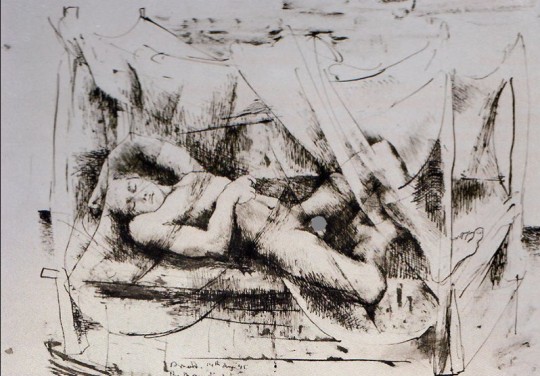
"The Mosquito Net
Other works record rare moments of "solitude" and "privacy" such as in The Mosquito Net (1945), in which a seemingly unsuspecting naked soldier dozes under the thin veil of a net, his legs apart and groin exposed, oblivious to Friend's voyeuristic gaze.
After the war, Friend joined the bohemian "Merioola" group of artists in Sydney for a brief period, before moving to the old New South Wales mining town of Hill End. His departure was prompted partly by unrequited love for handsome sculpture student Colin Brown.
Colin (1946), The Young Sculptor (1946), and Study of Colin (1946) form part of a series of richly textured paintings and sensitively etched drawings that reveal Friend's awe for the beautiful young Colin. Friend confessed in his diary, "My whole life is Colin. Not particularly Colin himself, but my love and appreciation and desire for the Colins of this world and my life."
Beginning in March 1949, Friend made several trips to Italy, where he fell in love with another model turned lover, a good-looking Italian peasant named Attilio Guarracino, whom he brought back to Australia. However, the pattern of short but intense romance repeated itself and the relationship did not last.
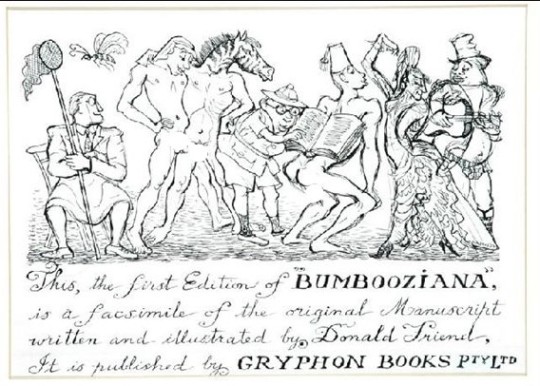
Flyleaf to "Bumbooziana"
In 1979, Richard Griffin published Friend's salacious book Bumbooziana, an "investigation into the private habits of elephants, camels, zebras, leopards, etc. and the equally strange customs of men. . . ." Perhaps the most famous of Friend's publications, Bumbooziana generated much sensation when introduced to a prudish Australian public because of its erotic imagery and sexually-explicit nature, its cover page illustrating the sexualized bodies of half-human, half-zebra creations of Friend's wild imagination.
Friend made "no attempt to disguise the homoeroticism which underlay much of his work." Nor did he mince words about his sexual preferences, depicting himself as "a middle-aged pederast who's going to seed" in his journal. His relationships consisted in large part of a series of affairs with adolescent boys, some of whom became his life-long friends, particularly Attilio Guarracino. His exhibitions were raided by the Vice Squad several times.
Donald Friend died in a squalid apartment in Bondi Junction in Sydney on 16 August 1989, aged 74. Numerous young creative Australians owe a great debt to Friend whose antics and style liberated them from the constraints of Australia during that time.


1975 – Orkut Büyükkökten is a Turkish software engineer who developed the social networking services Club Nexus, inCircle and Orkut. Orkut Büyükkökten is a former product manager at Google.
Originally from Konya, Turkey, Büyükkökten obtained a B.Sc. degree in Computer Engineering and Information Science from Bilkent University in Ankara. He received both a M.S. and a Ph.D. in Computer Science from Stanford University. His research at Stanford focused on Web search and efficient PDA usage.
He has been building and working on online communities since 2000. He introduced his first social network, named Club Nexus, at Stanford in the fall of 2001. Club Nexus was the first college-specific social network. It was a system built to serve the networking and communication needs of the Stanford online community. Students could use Club Nexus to send e-mail and invitations, chat, post events, buy and sell used goods, search for people with similar interests, place personals, display their artwork or post editorial columns. Within a few months of its introduction in 2001, Club Nexus had attracted over 2,000 Stanford undergraduates.
Later, Büyükkökten introduced an alumni social network, named inCircle, for the Stanford Alumni Association intended for use by university alumni groups. In 2002, Büyükkökten launched a company, Affinity Engines, to commercialize inCircle and Club Nexus.
After leaving Affinity Engines and joining Google, he decided to use his 20% time to develop a social networking service. He said: "My dream was to connect all the Internet users so they can relate to each other, it can make such a difference in people's lives." The product manager and Marissa Mayer thought of naming the service after its creator. "Orkut.com" belonged to Orkut Büyükkökten himself. Google convinced him, and its social networking service was called Orkut.
In 2016, he launched a new social networking service, Hello. The social networking site can be customized in three languages — English, French and Portuguese. By August 2016, Hello was available in the US, Canada, France, UK, Australia, New Zealand, Ireland, and Brazil — both on iOS and Android. Hello announced its entry into the Indian market in April 2018.
Büyükkökten was born into a Muslim family. He is openly homosexual, having married his partner in 2008.


1986 – Josh Seefried is an active duty first lieutenant in the United States Air Force, an LGBT rights activist, and a former co-chairman on the Board of Directors of OutServe-SLDN, an association of lesbian, gay, bisexual and transgender members of the U.S. Military. A graduate from the U.S. Air Force Academy in 2009, Josh was formerly known by his pseudonym JD Smith during his campaign to end the discrimination against lesbians, gays and bisexuals serving openly in the United States military.
Using social networking tools such as Facebook, Seefried organized LGBT active-duty military personnel into an underground association OutServe. To preclude outing himself as gay while serving on active duty in the Air Force, a violation of the then- Don't Ask, Don't Tell policy for which he could have been prosecuted and discharged, he assumed the leadership role and interacted with the media and officials in the Pentagon and the White House using only his pseudonym. He has appeared on CNN, HLN, and MSNBC in shadow; additionally, his comments continue to be regularly sought after by the media as a representative of lesbian, gay, and bisexual actively-serving military members. He was also an invited guest to the presidential signing of the legislation to repeal "Don't Ask, Don't Tell."
On October 27, 2012, the two organizations OutServe and SLDN merged. Seefried was voted co-chair of the board of directors, making him the youngest at 26 to co-chair any major LGBT organization.
Shortly following the repeal of "Don't Ask, Don't Tell", Josh worked with several LGBT military men and women to compile a book, Our Time: Breaking the Silence of "Don't Ask, Don't Tell".



1996 – Rickey Thompson is an American actor, comedian, and Internet personality. He rose to prominence for comedic videos he posts to Instagram, and previously Vine. Thompson starred in the YouTube Red series Foursome (2016-2018).
Thompson grew up in Raleigh, North Carolina. He attended Millbrook High School, where he regularly performed in theater productions and was also bullied for being gay. During this time, Thompson posted YouTube videos about his experience with bullying as well as about fashion. He also used Vine to post comedic videos of himself, usually speaking directly to the camera.
When he was 17, Kylie Jenner shared one of his videos, which led to an increase in his profile on the platform. He amassed 2.5 million followers by the time Vine shut down in 2016. Thompson then began posting short videos to Instagram and continued to grow his social media following. He has monetized his videos with promotional posts and guest appearances at events and in other videos.
Thompson moved to Los Angeles after high school to pursue a career in the entertainment industry and decided to forego college. He also has great interest in fashion.
Thompson is openly gay. He came out on Twitter in 2016.


8 notes
·
View notes
Text
TWST Student OC Profile - Duane Lovato Bardales
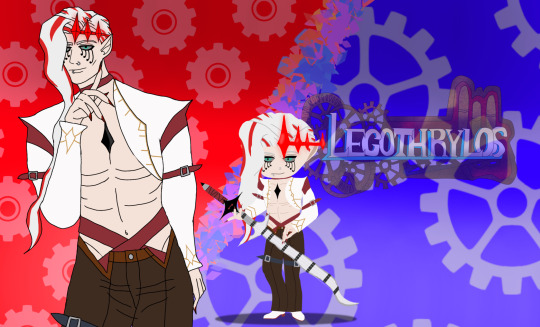
Theme song
Personal Info
Name - Duane Lovato Bardales
Stage Name - Wraith King
Physical Age - 21
Birthday - ??
Gender - Male
Species - Wraith/Half Fae
Height - 245cm/8ft
Orientation - Demisexual
Marital Status - Widowed
Homeland - Miseria Islet
Family - Renata Bardales+(Late Wife)
Grandfather+
Brother+
Niece+
Number of Cousins
Twist of Viego(Pentakill & Canon)from League of Legends
College Info
School - Hourglass Station Academy
Dorm - Legothrylos
Year - 4th
Best Subject - Dark Artes,Monster and Animal Culture
Club - Occult

Occupation - Rock Guitarist & Vocalist,King
Other Info
Likes - Gothic Aesthetics,Necromancy,Fire,Demons,People who Sew,Brunettes,Gothic Fashion,Eyeliner,Rock Music,Guitars,Creepy Subjects,Death Symbolism
Dislikes - Children(sorta),Being Told Someone is Fully gone when they are gone,Mundane duties as a king
Unique Magic - Dark Love Sap ~ The dark mist that snakes out of his chest hole can leech the life force of others who have even a sliver of feelings towards him. He can suppress the mist so it doesn't always happen but needs a bit of life force to feed his mortal side.
Personality - A man of stubbornness but has a soft side to his half dead heart. Raised to be a strict ruler so is rough around the edges but that's evident by how he looks. Into many things that may unnerve a lot so best to keep aware of that when encountering him. Appeal to his softer side and he will treat you well but annoy him and he will inch his long fingers around your neck…metaphorically..mostly.


Duane picrew for ref & his late wife Renata
Bio - The ill-fated king of a series of islands now plagued by darkness. Once was a decent softer man married to the love of his life til misfortune happened because of him and she perished for it. Since then been on a violent dark path trying to resurrect her but instead doomed his entire kingdom making him the king of an undead kingdom. Currently he has taken a leave to pursue a life to better himself from his pain but still harbors the yearning for what he lost. Became a rocker to express that pain though song and to keep himself from going fully crazy as now stuck between living and undead he needs an end to his suffering broken heart.
Other Things
Usually responds to people at 1st with a creepy smile but he means well.
His title as king and homeland is not known by most of the public his rocker persona is all that is known.
He speaks 3 languages with Spanish being his 1st so speaks the others with some fluency but may have some trouble. Uses the universal language spell so when he sings its clear.
English,Spanish,Italian VA ~ Antonio Banderas in style of Puss in Boots


(Homeland and Band Lore coming soon)
#twst oc#twisted wonderland oc#twisted wonderland#twst fandorm#twst fanschool#hourglass station academy#legothrylos#duane#viego lol#viego the ruined king#league of legends
11 notes
·
View notes
Text



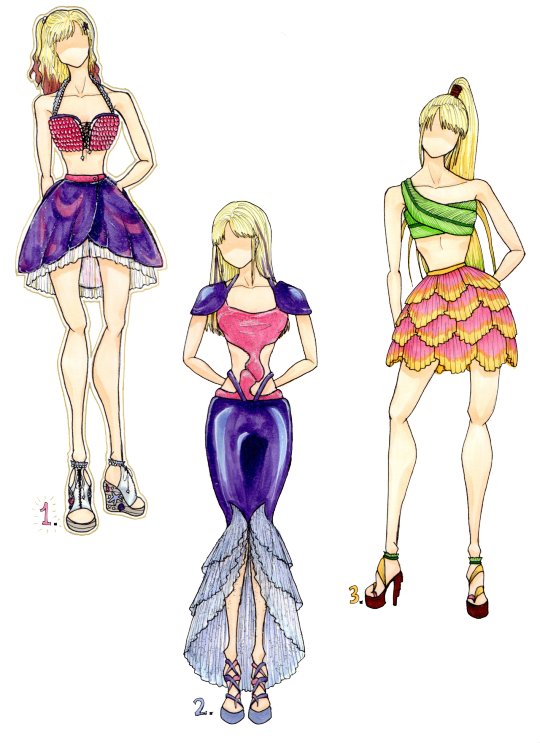






1st Year Academy Project - PsychoTropical
“90s Summer Tale” SS2017
#ᴘᴏʀᴛғᴏʟɪᴏ#mattie#mattie fashion#psychotropical#ss17#ss2017#fashion academy#fashion design academy#capsule collection#fashion collection#indie designer#fashion academy project#italian fashion designer#italian designer#italian fashion academy#italian tailor#made by me#purplematthiola#spring summer collection
2 notes
·
View notes
Text

Sophia Loren at the 35th Academy Awards on April 8, 1963, at the Civic Auditorium in Santa Monica. For the occasion, she is wearing a Dior dress created by Marc Bohan. It is she who will present the Oscar for best actor to Gregory Peck for the role of Atticus Finch in the film, To Kill a Mockingbird directed by Robert Mulligan.
Sophia Loren lors de la 35e cérémonie des Oscars le 08 avril 1963, au Civic Auditorium de Santa Monica. Pour l'occasion, elle porte une robe de Dior créée par Marc Bohan. C'est elle qui remettra l'Oscar du meilleur acteur à Gregory Peck pour le rôle de Atticus Finch Du silence et des ombres (To Kill a Mockingbird) réalisé par Robert Mulligan.
Getty Images
#sophia loren#italian actress#italian icon#fashion icon#christian dior#marc bohan#spring/summer#printemps/été#1963#fashion 60s#collection haute couture#oscars ceremony#35th academy awards#april 1963#gregory peck#robert#mulligan#to kill a mockingbird
65 notes
·
View notes
Photo

LADY GAGA ATTENDS THE 2023 OSCARS
After a long blackout season, Lady Gaga finally returned to the public eye at the 2023 Academy Awards held at the Los Angeles Dolby Theater.
Not only did she grace us with several looks, but also with a surprise performance of her “Top Gun: Maverick” movie title song “Hold My Hand”.
Styling by Sandra Amador and Tom Eerebout with assistance by Victor Cordero, Gianni Catalina and Venetia Kidd. The hair was done by Frederic Aspiras using Joico while glam was done by Sarah Tanno-Stewart using Haus Labs. Sweet and short manicure by Miho Okawara who used OPI.
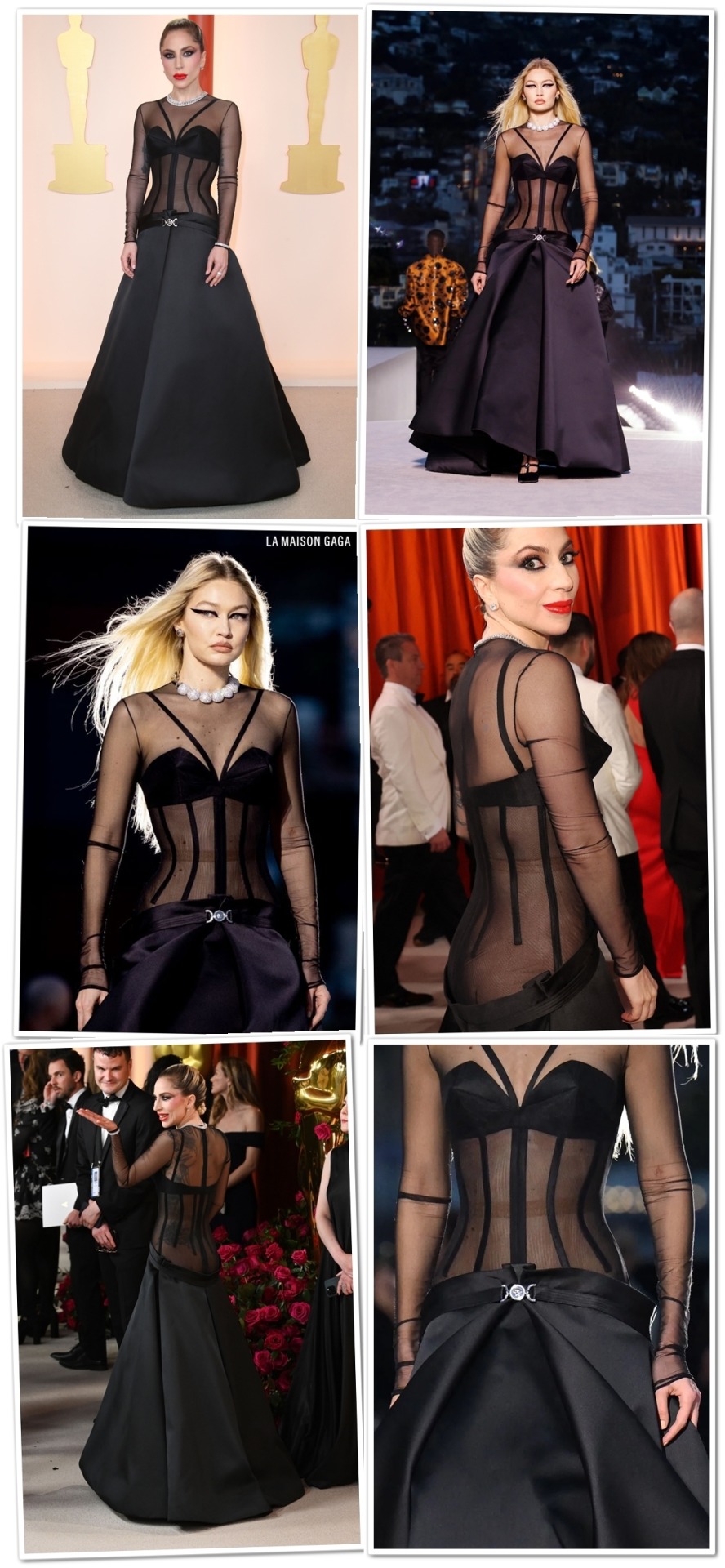
Mother Monster made her entrance wearing one of the freshly debuted Versace Fall/Winter 2023 closing numbers seen on Gigi Hadid — a semi-transparent black tulle corseted bustier top with bullet bra, long wool-silk box pleat drop-waist skirt with frontal projected kick and silver Nastro Gianni Medusa 95 belt to perfectly reflect the Italian fashion label's house codes!
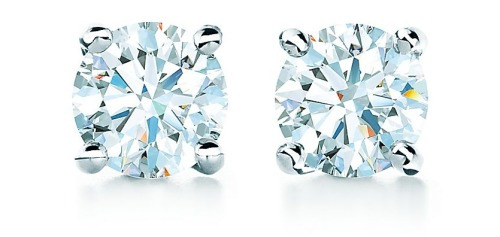
Her jewelry was provided by none other than Tiffany & Co. who chose some of the most stunning diamonds for her. Just like these $1,950 solitaire brilliant diamond stud earrings.
Shop:
Tiffany & Co. Solitaire Studs ($1,950.00)
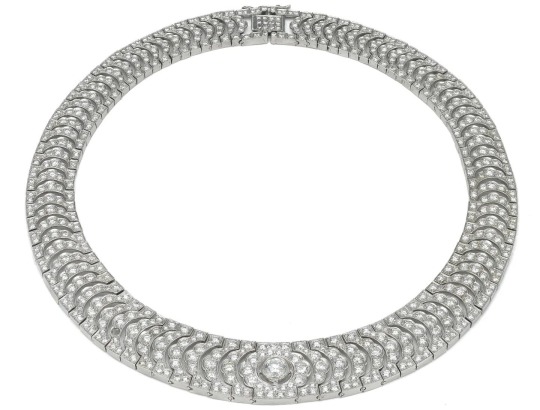
It’s rare to see archival pieces on the red carpet—it happens occasionally but not as often as jewelry historians would hope. This 1960s necklace of platinum and diamonds definitely made sure to catch all the attention.

She also wore the house’s “Victoria” collection platinum and diamond cluster bracelet...

...and a whopping $20,800 platinum and diamond pavé band ring from the “Soleste” collection.
Shop:
Tiffany & Co. Band Ring ($20,800.00)
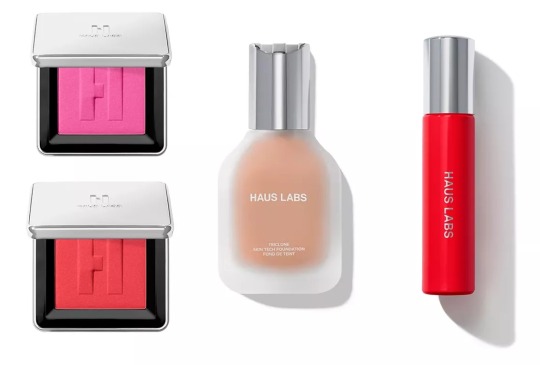
To create the look, Tanno used products from Gaga's beauty brand, Haus Labs. She started with Color Fuse Blush.
"I used “Dragon Fruit Daze” first which served as the base, and then we layered with “Watermelon Bliss” to add depth,". For Gaga's red glossy lip, Tanno used Atomic Shake Lip Lacquer in shade “Cherry Shine”. "It was the first time I've used it on the red carpet — It deserved a moment!"
Tanno also reveals the reason why Gaga's skin wasn't flush after removing so much makeup before she got on stage, crediting the Triclone Skin Tech Foundation, which she wore on the carpet, for being very gentle and soothing on the skin.
"Because our foundation contains fermented arnica it calms and soothes the skin while you are wearing it — I believe this is why I didn't have to worry about any skin irritation after such a fast removal." Tanno explains.
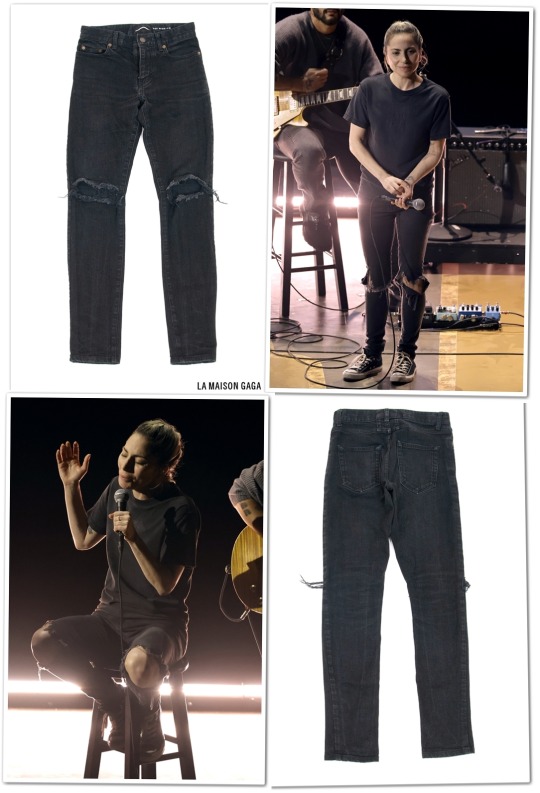
For her raw performance of “Hold My Hand”, Gaga went for a bare face and a minimal outfit consisting of pieces we’ve seen her rock before in her off-duty hours.
She rocked her favorite Saint Laurent black skinny jeans with slashed knees she owns and loves since 2016! It was paired with a vintage band tee she turned inside out, which I have yet to ID.

The shoes are the Converse Chuck Taylor All Star classic low-top sneakers in black canvas.
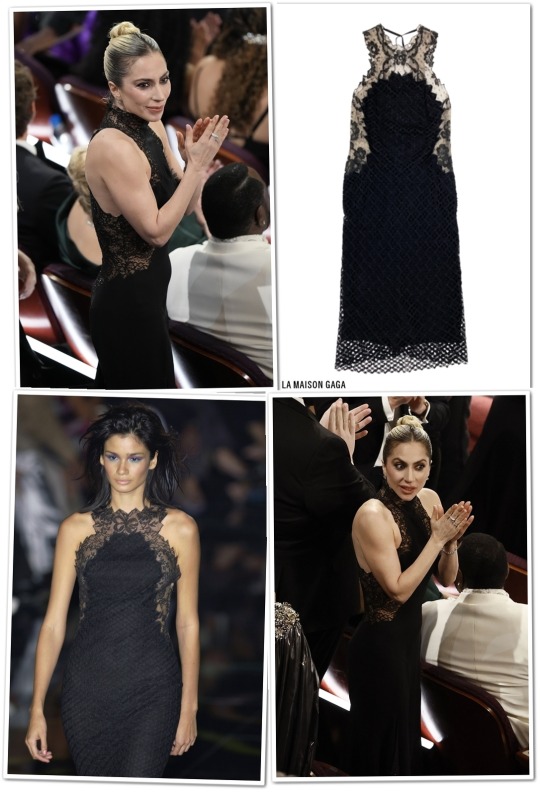
There was actually a third outfit change that was not broadcasted on TV! LG wore a vintage Versace Spring/Summer 2002 black silk gown with lace insets and jet crystal embellishment. Above you can see a similar, shorter version.

She also added another Tiffany & Co. ring onto the mix. It’s the alternating ring in platinum and diamonds ($19,500) from the “Victoria” collection.
Shop:
Tiffany & Co. Alternating Ring ($19,500.00)
#March 2023#dresses#Versace#pants#denim#YSL#jewelry#Tiffany and Co#sneakers#Converse#beauty#Haus Laboratories#Joico#OPI
39 notes
·
View notes
Text
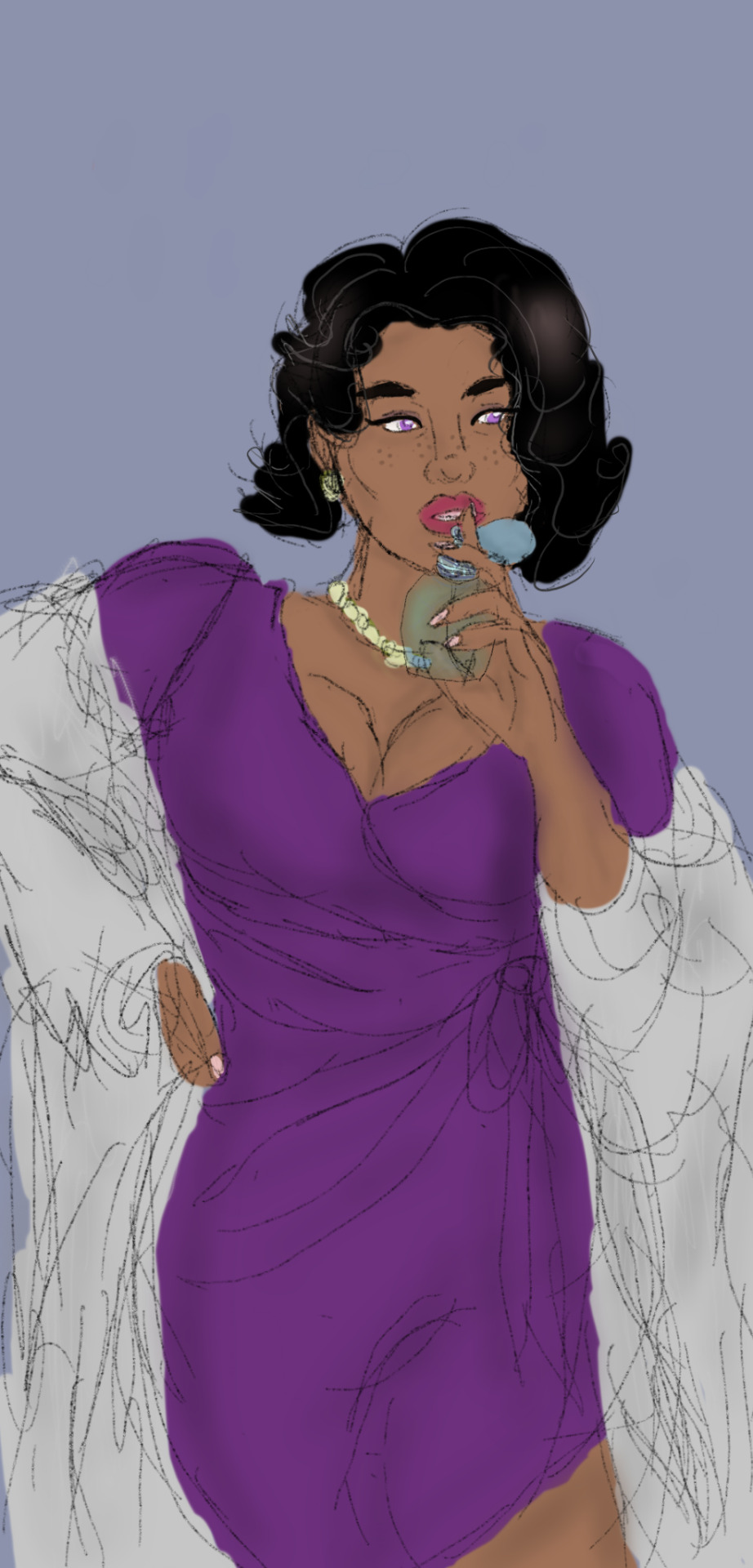

Recently played @pdrrook VN Perfumare and fell in love with the setting and characters. I'm so looking forward to reading more of this story when Perfumare: Avulsion is fully released.
I'm now compelled to share some art and basic info about my MC.
Name: Violeta Reyes Liz Morren
Pronouns: she/her
Preferences: Bisexual
Birthday: February 23rd
Height: 5ft7”/170.18cms
Appearance: A curvy Latina woman in her mid-20s of average height, with a Bronze complexion and black medium length straight hair. She has an oval shaped face with freckles, hooded eyes, and a full mouth. Normally, dresses in classy feminine vintage style fashion in public with makeup and hairstyles inspired by starlets from the Golden Age of Hollywood.
Notable features: Violet eyes that she normally hides with color contact lenses, and noticeable dimples when she smiles or laughs
Personality: At first glance, Liz comes across as a very charming and attentive person. Which has helped her in her job (both at the perfume shop and her illegal side gig) and staying under the radar. Being observant of people and how they behave is useful for making a sale or determining if they're a potential threat and acting accordingly to try and get the best outcome. Especially if it's a situation where she doesn't always need to rely on her affliction. Liz is well aware she's an attractive woman, and she's not above using it to her advantage. After all, she doesn't always need to use Allure to get someone to do what she wants when a coquetteish smile, asking sweetly for a favor, combined strategic use of cleavage can get the same results. Although she does enforce a strict professional relationship boundary with her clients and suppliers.
While Liz usually comes across as friendly and accommodating, she still keeps others at arm's length due to her past. She used to have a pretty good childhood growing up and was raised in a large and loving family with her parents, grandparents, siblings, aunts, uncles, and a seemingly endless number of cousins. Until she developed her gift and was shipped off to the academy suddenly alone because of something she couldn't control. At first, young Liz thought that if she worked hard and could control her Allure ability, maybe she could come home one day. Sadly, no matter how hard she worked or how well she did all the letters she wrote home, they never responded. Eventually, Liz got tired of the heartbreaking silence and just stopped trying to reach out to anyone. Until Reed started attending the Academy and wouldn't leave her alone.
Now, Liz can count the number of people she trusts and depends on with one hand and still have fingers left over. Although with those few people, she tends to be more open and relaxed around them. Sure, she'll still smile politely with other people. She works in retail, it's expected. However, when Liz trusts someone, she is more expressive, genuine, and affectionate as opposed to the more carefully affable persona. She'll argue with you, cry, make dirty jokes, and ramble about whatever new thing she's passionate about.
Additional info & Headcanons
Both her alias and real names are references to brands of cologne/perfume. Her alias given name Liz in reference to actress Elizabeth Taylor who had her own line of perfumes, one of which is called Violet Eyes, and her real name Violeta Reyes came from Agustin Reyes’ Royal Violets cologne.
When it comes to Liz's personal scent preferences, she likes using solid perfumes that have a fresh and light scent like in linen perfumes. Solid perfumes travel better and last longer than liquid perfumes and tend to have more subtle scents so they're less likely to overwhelm her sensitive sense of smell.
Liz’s native tongue is Spanish and she became fluent in Italian due to growing up with Reed. Sometimes she'll rapidly switch between English, Spanish and Italian (complete with hand gestures) during conversation if she's very excited or angry. Normally Liz tries to avoid getting too animated in public because it'll draw unwanted attention, although there are exceptions like when an obnoxious customer crosses a line and she tells them off, or when she's around someone she trusts.
She'll also use Spanish terms of endearment with loved ones. Which makes things interesting for the various LI saves. Jewel and Laurent seem to be the types who'll become flustered, which would make Liz coo over how cute they are. Meanwhile, Reed, who's constantly addressing her with “bella” and “tesoro” is mentally agonizing himself on his save whenever Liz calls him “guapo” or “cariño” in return.
Since Liz was left to fend for herself so young, she had to learn how to take care of herself quickly. A particular skill set she developed was mending clothes and diy repairs. It helped save her money on clothes and repairs around the house over the years, excluding major issues with plumbing or wiring, as she doesn't have the training for those kinds of problems.
Back at their Academy days Liz once saved Reed from an embarrassing situation when he ripped the seat of his pants by helping him discreetly sneak back to his dorm to change and even mending the ripped pants for him. Ever since Reed always asks Liz for help whenever he needs something mended or altered. Over the years, Liz started getting annoyed when she started feeling less like she was helping out a friend and more like Reed was using her as his personal seamstress. They even argued about it a few times until finally settling on a compromise. Whenever Reed needs some clothes fixed or altered, he has to be willing to do some chores or cook for Liz in exchange. It even worked for a while …until Reed learned Liz also be used to mend or take in Flavio's clothes too. Although, to be fair, Flavio rarely asked for Liz's help in the first place.
Since Jewel and Reed don't get along, Liz often times finds herself having to play mediator between the two. Except whenever card games are involved. One day, when work at both the Perfume shop and bar was slow, the three of them found some playing cards and wound up playing poker to pass the time. Considering Reed is so competitive and the fact Liz knows him so well, he'd consistently wound up losing against her. The game quickly devolved into a childish argument between Reed and Liz, and in a bizarre reversal, Jewel had to play mediator between them.
Since Laurent is a fan of classic noir films, he was very caught off guard when he first started visiting the perfume shop and saw Liz wearing her vintage attire. Especially on his route, Laurent wasn't quite sure if Liz was real or a dream since she looked like one of those beautiful actresses from classic black and white films but in living color.
#Perfumare vn#pfm#fan art#concept art#Liz Morren#of course I had to make her real name a reference to cologne/perfume#it's fun imagining her interactions with the various cast#for some reason I could imagine Alan finding it entertaining to watch Reed and Liz interacting#as long as it doesn't affect their work watching Reed and Liz banter is probably like a live action telenovela for Alan#especially on reeds route where he's obviously in love with Liz#meanwhile Jewel and liz fall in love while on the run
11 notes
·
View notes
Text
Explaining one of VTMB paintings (pt 2.)

Lilith-1889 Oil on canvas, by John Collier
John Collier (27 January 1850 – 11 April 1934) was a British Painter and writer of there Pre-Raphaelite Brotherhood. The Pre-Raphaelite Brotherhood was a group of young British painters who banded together in 1848 in reaction against what they conceived to be the unimaginative and artificial historical painting of the Royal Academy and who purportedly sought to express a new moral seriousness and sincerity in their works. They were inspired by Italian art of the 14th and 15th centuries, and their adoption of the name Pre-Raphaelite expressed their admiration for what they saw as the direct and uncomplicated depiction of nature typical of Italian painting before the High Renaissance and, particularly, before the time of Raphael [1].
Lilith description reads “The first wife of Adam, according to cabalistic mythology, seductive and free-spirited woman who was displeasing neither to God who created her, nor wife.”
The mythological character of Lilith first appears around 500AD originally in Jewish folk lore and some religious texts written at the time. She later spread to both Christian and Islamic folk lore. In myths she was believed to be the actual first woman and was created by God out of the same clay used to make the first man Adam at the same time ad God created Adam. She was supposed to be Adam’s first wife but refused to ether lie under him or submit to him as she believed she should be equal to him. As a results she was l thrown out of Eden by God who then created Eve from Adam’s rib. In some versions she is also cursed by God and became a Demon; others she was made pregnant by ether Adam or a Demon she meets after leaving Eden and gives births to Demons. She was associated with storms, sexual temptation, disease and death( epically of pregnant women and children). In some myths she hunts down and kills pregnant woman and children in revenge against Adam /being thrown out of Eden as all humans would be the descendants of Adam and Eve. In the Medieval ages Jewish parents made amulets to protect their babies from Lilith. She later became associated with tempting men in a similar fashion to succubus. Despite her prevalence in folklore she was never mentions in any version of the official creation myths found in the Torah, Bible or Qur’an. Her character is most likely based of two differ types of demons/ spirts from Mesopotamia from 3000BCE, as Mesopotamian religion and myths had a large impact on abrahamic religions. The first type of demon/spirts where known as Lilitu, who were said to prey soon women and children and associated with lions, deserts storms and illnesses. The second type is known as Lilu which are like succubus and would have see with men when they were asleep in order to reproduce. There is a Babylonian text where there is a character named Lilith who is a Lilu demon/spirt who was a prostitute of the Mesopotamian goddess of was and fertility Ishtar who would send Lilith out to secure and lead men astray [3].
Collier was the first artists of the XIX century, afford so openly and invitingly to portray the character. Lilith Rossetti – almost ethereal. Combing their hair, she is reserved and cold. Lilith Collier is the embodiment of passion and lust. Thanks to the romantic perception of the mythological wife of Adam in the nineteenth century, for many today, Lilith is a symbol of a strong, independent woman. [2]
This is note worthy as this painting and its history also contrasts the other paintings of Lilith seen in the game which were created specifically for VTMB and are a part of the Santa Monica Gallery Noir art exhibit. In the Gallery Noir paintings Lilith is not the primary focus but rather depicted only in her relationship to Cain.
In the mythology of Vampire the Masquerade, Lilith origins as the first wife of Adam only when she refuses to lay with Adam not only does God banish her but also curses her so that anyone who she loved and cared for would be unable to truly love her in return. She later meets Cain as he is wandering in the Land of Nod while is cursed by God, but before he is cursed again which makes him a vampire. They become lovers and Lilith has learned magic and Cain begged her to teach him these ways as her lover. Lilith agrees and performs a awaking ceremony( a mage ritual) on Cain which requires him to drink her blood from a brutal bowl to which awakens the powers within him which would later become the differ kindred disciplines. However this angers God who sends three angels who cure him and any decedents he should have to be vampires. After gaining these powers Cain abandons Lilith which enrages her. In the overall World of Darkness lore she worshiped by a cult known as the Bahai,(which includes both mortals and vampires) who worship her as the Dark mother. The cults lore mostly matches the rest of the WOD lore with some changes such Lilith fled Eden when Adam tried to rape her, some precise her to be the first mage, has created her own garden after being thrown out of Eden and for the vampire that at Bahai they reject Cain’d linage due to his betrayal of Lilith after the awaking ritual and so they refer to themselves as Lhaka rather than Cainites or Kindred. [4]
Citation
[1]Britannica, The Editors of Encyclopaedia. "Pre-Raphaelite Brotherhood". Encyclopedia Britannica, 3 Feb. 2023, https://www.britannica.com/art/Pre-Raphaelite-Brotherhood. Accessed 8 March 2023.
[2]https://arthive.com/artists/63873~John_Collier/works/336527~Lilith#:~:text=Lilith%20Collier%20is%20the%20embodiment,of%20a%20strong%2C%20independent%20woman.
[3]www.newworldencyclopedia.org/entry/Lilith
[4] http://whitewolf.fandom.com/wiki/Lilith_(WOD)
#art history#lilith#pre-raphaelite#vtmb#vtm bloodlines#santa Monica Gallery Noir VTMB mission#Explaining one of VTMB paintings
23 notes
·
View notes
Text



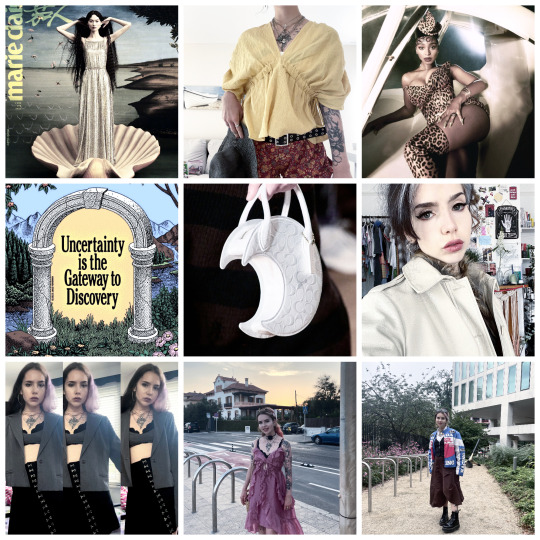
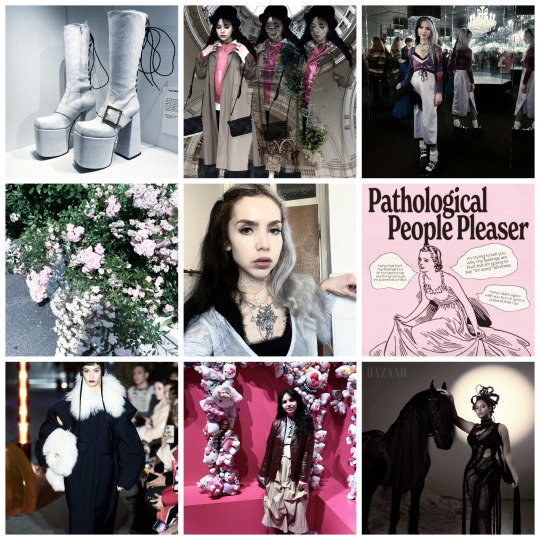
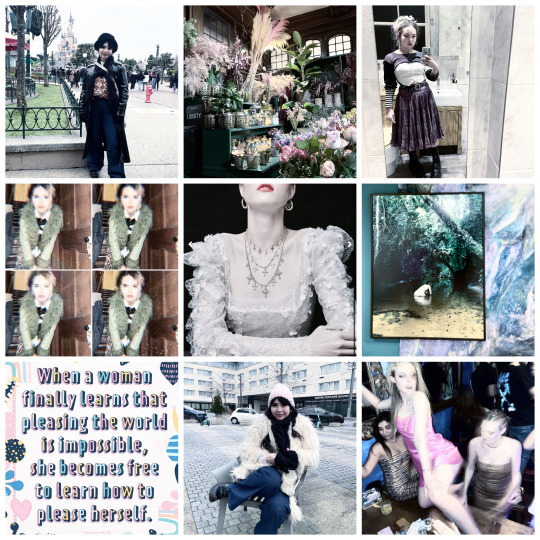


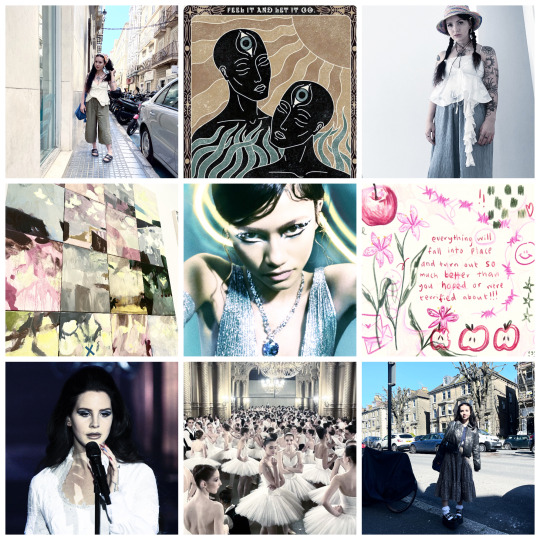

June 2021->June 2023: Photo Dump No.23
DATE SAVED, L-R BY ROW:
11th July 2021 [Bella Hadid photographed in Miami, December 2019], 10th November 2021 [Southbank, Lambeth], 26th June 2023, 24th August 2022 [GIANT Art Gallery, Bournemouth Town Centre], 16th September 2022 [Et Ochs RTW S/S23], 30th June 2023, 2nd March 2023, 28th November 2021 [the Saatchi Gallery, Chelsea], 27th June 2023 [Lyme Regis, Dorset]
26th September 2023, 1st June 2023 [Colors Festival @ Camden Lock, Camden], 10th January 2023 [Scorpio Platform Boot, Shelly’s London S/S23], 15th September 2023 [Bermondsey, Southwark], 24th September 2022, 8th December 2022 [Twisted Museum, Oxford Circus], 22nd July 2023 [Yayoi Kusama: You, Me and the Balloons @ the Factory International, Deansgate, Manchester], 6th September 2023, 14th November 2021 [Glass Animals live @ Portsmouth Guildhall, Hampshire]
17th February 2022, 29th September 2022, 17th October 2021 [the Other Art Fair @ the Truman Brewery, Brick Lane], 12th July 2023, 31st May 2023 [source: instagram account @howtobehumanpod], 26th August 2023 [Salou, Tarragona], 9th April 2022 [source: instagram @_brightsouls_], 5th September 2021 [John Galliano RTW S/S92], 27th August 2023 [Salou, Tarragona]
31st March 2023 [He Cong photographed by Leslie Zhang for Marie Claire China, issue 298, April 2023], 28th August 2023, 15th July 2021 [Normani BTS on the set of the
“Wild Side" music video, released July 2021], 27th May 2023 [source: instagram account @howtobehumanpod], 30th May 2023 [details @ Coach RTW F/W23], 13th March 2022, 21st July 2023, 23rd August 2023 [Sitges, Catalonia], 27th September 2023 [The Design Museum, Kensington]
27th September 2023 [“Hallgarth” boots, Roker RTW F/W23 @ REBEL: 30 Years of London Fashion exhibition, the Design Museum, Kensington], 15th March 2024, 1st December 2022 [Yayoi Kusama: Mirror Infinity Rooms exhibition @ Tate Modern, Bankside], 28th July 2021 [Christchurch, Dorset], 22nd March 2023, 3rd February 2024 [source: instagram account @sadborderlinebitxh], 14th February 2024 [Luar RTW F/W24], 16th March 2024 [CUTE exhibition @ Somerset House, Strand], 11th August 2021 [Beyonce shot by Campbell Addy for Harper's Bazaar, August 2021]
8th January 2024 [Disneyland Paris, Marne-la-Vallée], 7th December 2022 [Liberty London, Soho], 9th December 2023, 13th December 2023, 3rd November 2021 [Ulyana Sergeenko, Haute Couture S/S19], 29th December 2021 [Untitled from the Fractal Scars, Salt Water and Tears collection, Ester Teichmann @ GIANT Art Gallery, Bournemouth), 30th November 2022 [source: instagram account @mantramagazine], 9th January 2024 [Marne-la-Vallée, France], 28th May 2023 [Elle & Dakota Fanning, February 2023, via @ellefanning on instagram]
6th May 2023 [source: instagram account @howtobehumanpod], 1st August 2021 [Dua Lipa wearing archive Jean Paul Gaultier on the set of the “Demeanor” video, released July 2021], 9th August 2023 [the Southbank Centre, Lambeth], 29th December 2021 [It's a Rave Dave exhibition @ GIANT Art Gallery, Bournemouth], 21st July 2023, 28th October 2023 [Nili Lotan RTW F/W23], 31st October 2023 [Bethnal Green, Tower Hamlets], 15th October 2023], 1st November 2023 [Disney, 100 Exhibition @ ExCel Centre, Custom House]
5th April 2024 [Museo Picasso, Málaga], 8th February 2024 [Bella Hadid for Italian Vogue, May 2024 issue], 28th July 2021 [Bournemouth Centre, Dorset], 23rd January 2024 [source: instagram account @wrencraftt], 21st March 2023, 28th September 2023 [Philipp Plein Resort 2024], 9th February 2024, 21st August 2023 [source: instagram account @_mysunbeam], 7th April 2024 [Benalmádena, Andalusia]
9th April 2024 [Málaga, Andalusia], 29th August 2021 [source: instagram account @aniko.arts], 4th April 2024, 21st June 2023 [Summer Exhibition @ the Royal Academy, Mayfair], 10th May 2023 [Zendaya photographed by Elizaveta Porodina for Vogue Italia, July 2022 issue], 2nd October 2023 [source: instagram account @eggsdoodz], 14th July 2021 [Lana Del Rey performing live @ L'Olympia, Paris, 27th April 2013], 22nd December 2023 [source: Pinterest account @gobrielle], 30th March 2024 [Hove, East Sussex]
February 2nd 2023 [Objects of Desire: Surrealism and Design 1924-Today @ the Design Museum, Kensington], 10th April 2024 [Benalmádena, Andalusia], 3rd April 2024 [Mijas Pueblo, Andalusia], 19th September 2021 [Van Gogh Alive lmmersive Exhibition, Kensington Gardens, London], 7th November 2023 [Viktor & Rolf Haute Couture F/W23], 28th October 2023 [Bermondsey Street, Bermondsey], 2nd April 2024 [Benalmádena, Andalusia], 10th April 2024, 10th April 2024
#PHOTO DUMP#fashion#fashiondiary#photography#ootd#moodboard#styleinspo#style#art#travel#london#streetart#streetstyle#inspo#fashioninspo#runway#rtw#street photography#women artists#aesthetic#londonist
2 notes
·
View notes